
- Buyers Guide

- Technical Details


Trek Session 8 29 GX Review
- superb frame
- 25 years warranty
- with 17,7 kg unfortunately a bit heavy
Overall Bike Check
The most importanten ratings of the [bike_model] ⬤ in comparison to the competitor bikes of following categorie: (Downhill-Bike up to 6000 €) ⬤ .
Value for Money Check
If you are keen on value for money, this is your chart. It shows you at a glance how many bike you get for 5099 €.
Je steiler der Winkel des Sitzrohrs ist, desto effizienter können Sie in die Pedale treten.
- Frame Session EX Alu
- Frame Material Aluminium
- Fork RockShox Boxxer Select, DebonAir spring, Charger RC damper, 46mm offset, 20x110mm Boost thru axle, 200mm travel
- Spring Unit air
- Remote-Lockout no
- Damper Size: R1, Fox VAN Performance, 400lb spring, 250x72.5mm; Size: R2, Fox VAN Performance, 450lb spring, 250x72.5mm; Size: R3, Fox VAN Performance, 500lb spring, 250x72.5mm
- Gearrange 227%
- Drivetrain 1x7
- Gear Lever SRAM GX DH, 7 speed
- Rear Derailleur SRAM GX DH, medium cage
- Crank Truvativ Descendant DH, DUB 83, 34T steel ring, 165mm length
- Cassette SRAM PG-720, 11-25, 7 speed
- Chain SRAM PC-1110, 11 speed
- Brake Set SRAM Code R 4-piston hydraulic disc
- Brake Rotors 200/180
- Wheel Set Bontrager Line DH 30, Tubeless Ready, 6-bolt, 110x20mm Boost thru axle
- Tires Front Bontrager G5 Team Issue, wire bead, 2-ply 60tpi, 29x2.50''
- Tires Rear Bontrager G5 Team Issue, wire bead, 2-ply 60tpi, 29x2.50''
- Saddle Bontrager Arvada, hollow chromoly rails, 138mm width
- Seat Post Bontrager Rhythm Elite, 31.6mm, 0mm offset, 330mm length
- Stem Bontrager Line Pro, 35mm, Direct Mount, 50mm length
- Handle Bar Bontrager Line, alloy, 35mm, 27.5mm rise, 780mm width
- Handle Bar Width 780
- Head Set FSA Orbit, sealed cartridge bearing, 1-1/8? top, 1.5? bottom (includes geometry adjust angled cups)
best alternatives

- World Cup tested bike
- one of the best bikes in this price range
- strong in the descents
- great groupset for this price range
- only 16,1 kg - light

- Successful in the Downhill World Cup
- definately shredable in the downhill
- better shifting than the direct competition
- 5 years warranty

- very good and independent rear triangle
- benchmark bike in this price range

- Successful in the Downhill WorldCup
- good complete bike for the price
- rides excellent in the downhill
- strong in the uphills
- great frame

- 17,9 kg - a bit heavy

- good value for money
- great wheels for this price range

- competitors ride better in the downhills
- 17,87 kg - a bit heavy

- adjustable rear end
- there are stronger bikes in the downhill

- robust bike
- value for money could be better
Expirience with the Trek Session 8 29 GX

mostly compare
Trek session 8 29 gx vs trek session 9 x01.

Mountain Bike Novelties 2024
This article is regularly updated. Last update 26.10.2023

What mountain bike frame size do I need?

Which bike suits me and my needs?

Raphaela Richter reports from EDR
ride better bikes NEWSLETTER
Privacy preferences
Product license not for production use! ( Learn more )
We use cookies and similar technologies on our website and process your personal data (e.g. IP address), for example, to personalize content and ads, to integrate media from third-party providers or to analyze traffic on our website. Data processing may also happen as a result of cookies being set. We share this data with third parties that we name in the privacy settings. The data processing may take place with your consent or on the basis of a legitimate interest, which you can object to in the privacy settings. You have the right not to consent and to change or revoke your consent at a later time. For more information on the use of your data, please visit our privacy policy.
You are under 16 years old? Then you cannot consent to optional services. Ask your parents or legal guardians to agree to these services with you.
- Email: [email protected]
- Contact form: https://bike-test.com/en/
- Privacy Policy: https://bike-test.com/en/privacy-policy/
- Legal notice: https://bike-test.com/en/imprint/
- Type: HTTP Cookie
- Host: .bike-test.com
- Duration: 365 days
- Host: bike-test.com
- Contact form: https://bike-test.com/
- Privacy Policy: https://bike-test.com/datenschutzerklaerung-dsgvo/
- Legal notice: https://bike-test.com/impressum/
- Duration: 1 day
- Type: IndexedDB
- Duration: No expiration
- Duration: Session
- Type: Local Storage
- Duration: 2 days
- Provider: Google Ireland Limited
- Privacy Policy: https://policies.google.com/privacy
- Host: .youtube.com
- Duration: 1 year
- Duration: 2 years
- Duration: 1 month
- Duration: 6 months
- Duration: 18 years
- Duration: 6 month
- Duration: 8 months
- Host: .google.com
- Duration: 1 years
- Duration: 1 months
- Host: www.google.com
- Duration: 1 Minute
- Duration: 90 days
- Duration: 1 minute
- Duration: 13 months
- Duration: 30 minutes
- Duration: 30 days
- Duration: 9 months
- Duration: 1 hour
- Host: .doubleclick.net
- Duration: 14 days
- MAGAZINE OFFERS
- BIKE INSURANCE
- Best Products
- Maintenance
- Accessories
- Long-Term Reviews
- First Look Friday
- Bike of the Week
- Tech Features
- Routes and Rides
- Bike Galleries
- BikeRadar Bargains
- Buyer's Guides
- Fitness & Training
- Sizing & Fit
- Mountain Biking UK
- Cycling Plus
- BikeRadar Podcast
Trek Session 8 27.5 review
Impressive pedigree, but a letdown in the rough
‘ABP’ rear suspension provides a solid, supple action
Relatively short front end feels cramped, high bottom bracket and short frame deliver a sometimes precarious-feeling ride, harsh fork and weak brakes are disappointing for the price

While Trek's top-end Sessions had a complete redesign for 2018, this budget model uses a frame carried over from previous years. It’s a design that’s enjoyed huge success on the World Cup circuit, but how has it stood the test of time?
Editor's note: This bike has now been superseded by the 2019 model which was not available for review at the time of this test
- The new Yeti SB130 is a trail bike with enduro attitude
- Commencal Furious Essential review
Trek Session 8 27.5 frame
Trek’s ABP (Active Braking Pivot) suspension system is essentially a single-pivot with linkage-driven shock design, except it uses a rear-axle pivot to reduce the effect of braking on the suspension action.
The shock is compressed between the upper rocker link and the forward tips of the chainstays. Trek calls this set-up ‘Full Floater’ and uses it to tweak the leverage curve so that the Session provides 210mm of slightly progressive travel.
A ‘Mino Link’ chip allows the bottom-bracket height to be adjusted by 10mm and the head angle by half a degree.
Trek Session 8 27.5 kit
To be blunt, you don’t get all that much for your money.
The Session 8 has solid DT Swiss wheels, Bontrager tyres and SRAM drivetrain parts, but its BoXXer RC coil fork houses RockShox’s more basic Motion Control damper. The SRAM Guide R brakes were also disappointing, lacking in power and developing a spongy feel after a few muddy rides.
Trek Session 8 27.5 ride
The Session felt small and cramped. In fact, I found myself double-checking that Trek had sent the XL frame I’d requested.
Not only is the reach noticeably short, but the minimal-rise bar (15mm) sits low on the negative-rise stem. With a high-ish bottom bracket, the bar feels even lower when riding. At 6ft 3in, I was practically rubbing my knees on the bar when I leaned forward to pedal. Plus things felt precarious in steep or technical sections.
I ended up swapping out the bar for something taller and with less backsweep, as well as putting a 5mm spacer under the stem. Even then, the high bottom bracket and short front centre meant the ride was far less stable or confidence-inspiring when things got fast or technical.
The Trek’s higher centre of gravity makes pushing hard into turns feel like more of a gamble too, despite the impressive grip of the high-volume Bontrager G4 tyres.
Up front, the Motion Control fork also puts the Session at a distinct disadvantage. It’s noticeably harsh on high-speed hits in particular, where it spikes badly. The damping just can’t react in time to keep up with square-edged bumps and the result is a clunky feeling through the bar.
In contrast, the rear suspension is very supple. The RockShox Vivid R2C shock is fancy for this price point, but doesn’t offer any big advantage over the simpler coil shocks found on other bikes.
Because of the short and tall frame, I had to run the rebound damping (particularly the high-speed rebound) pretty slow to provide enough stability over jumps and G-outs, and this compromised sensitivity a little. I also swapped the stock 500lb/in spring for a 550lb/in replacement to make the bike feel more balanced.
Trek Session 8 27.5 verdict
The outdated geometry, harsh fork and underwhelming brakes meant I really struggled to get on with the Trek.
Smaller riders can go some way to addressing the first complaint by going up a size, to get a longer reach (if the seat tube isn’t too long), but the high bottom bracket still undermines the handling somewhat. Considering all this (as well as the price), it's a hard bike to recommend.
Share this article

Contributor

- Terms & Conditions
- Subscribe to our magazines
- Manage preferences

The brand new 2021 Trek Session 8.

Despite its capabilities in the rough stuff, the Session is still a fun ride.

The cable routing is fairly neat.
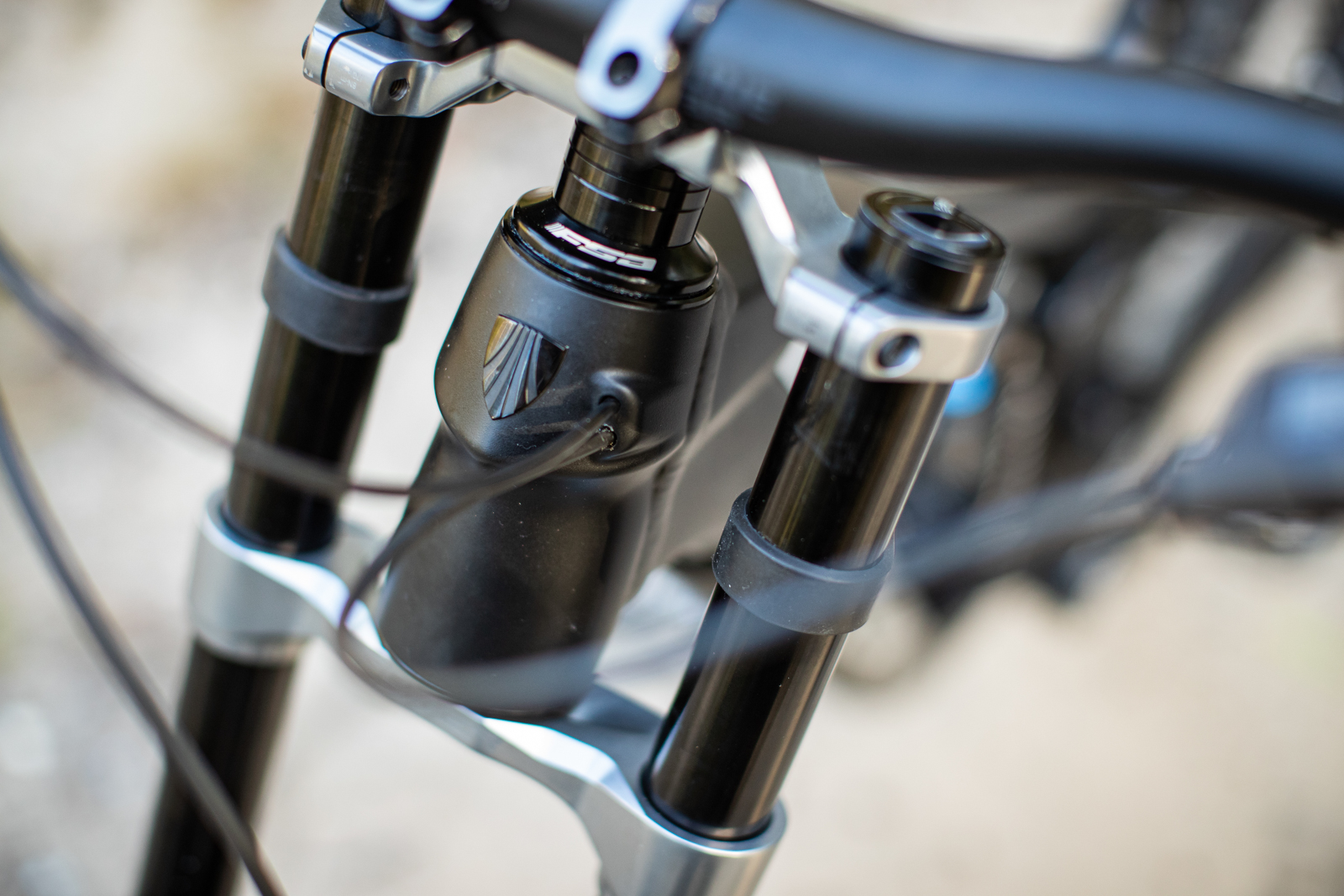
Trek give riders the option of routing the cabling internally or externally.
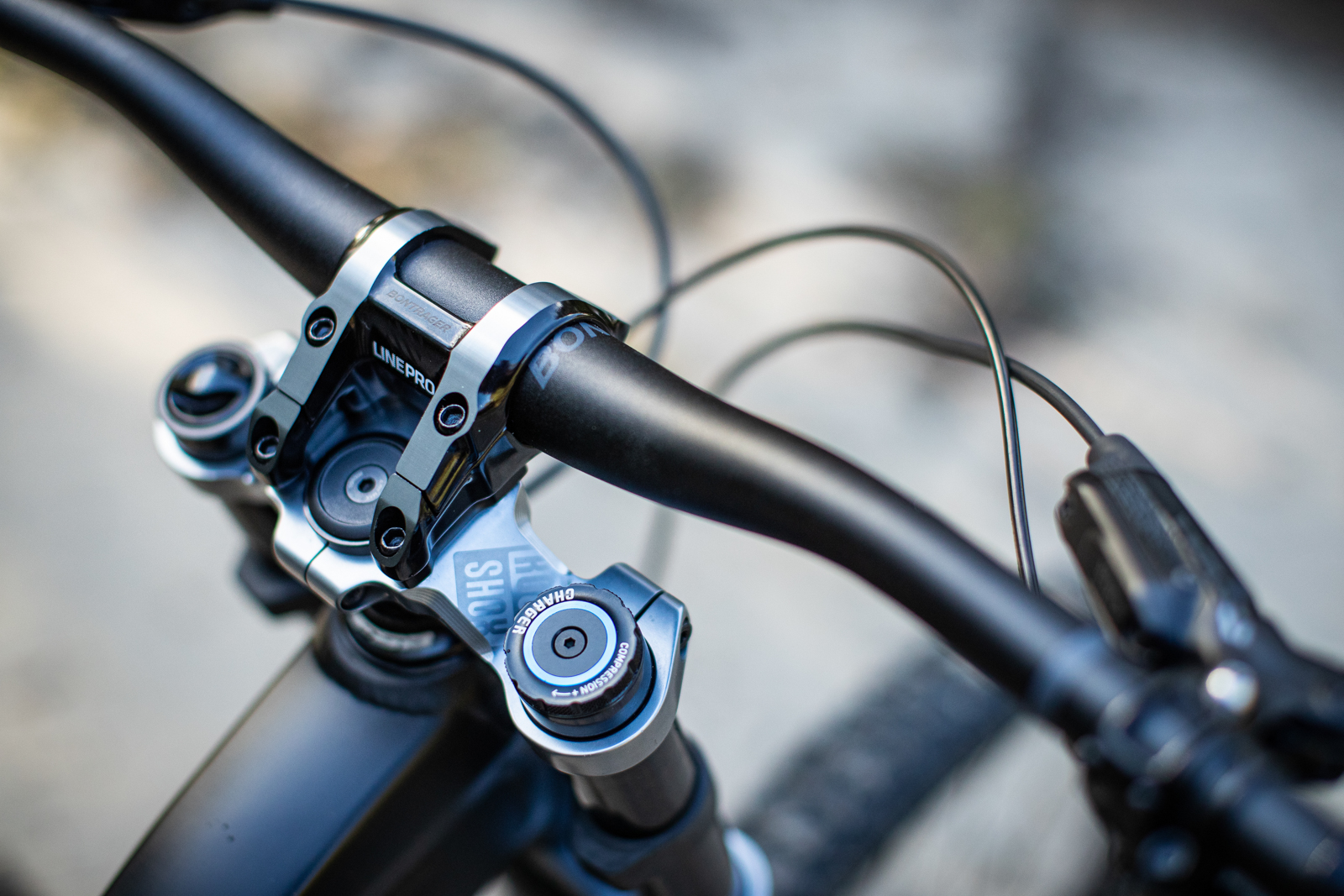
The Session 8 model we tested features a Boxxer Select with 5 clicks of compression damping.

The new Session enjoys fast, chundery terrain.
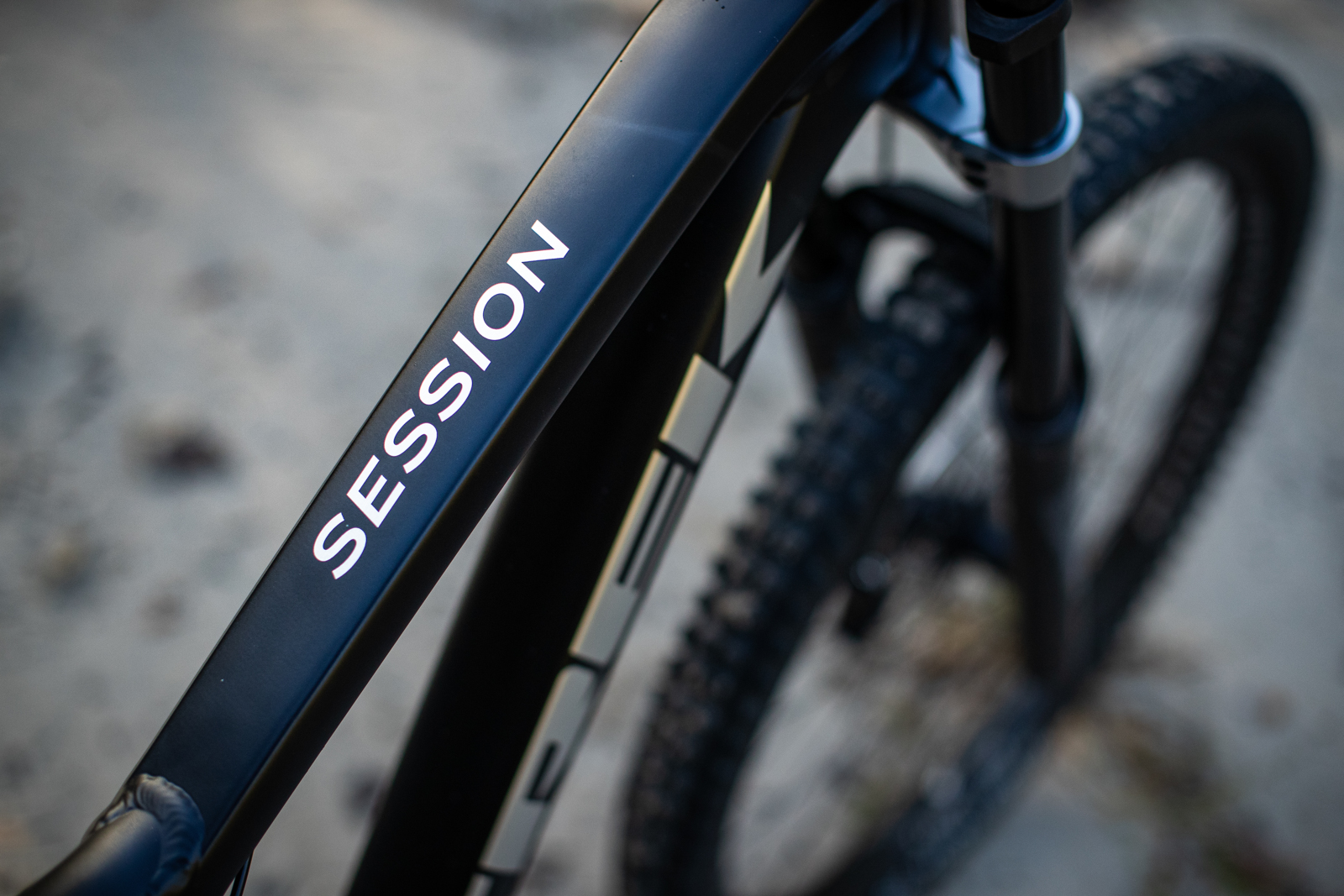
We liked the bold new graphics on the Session.
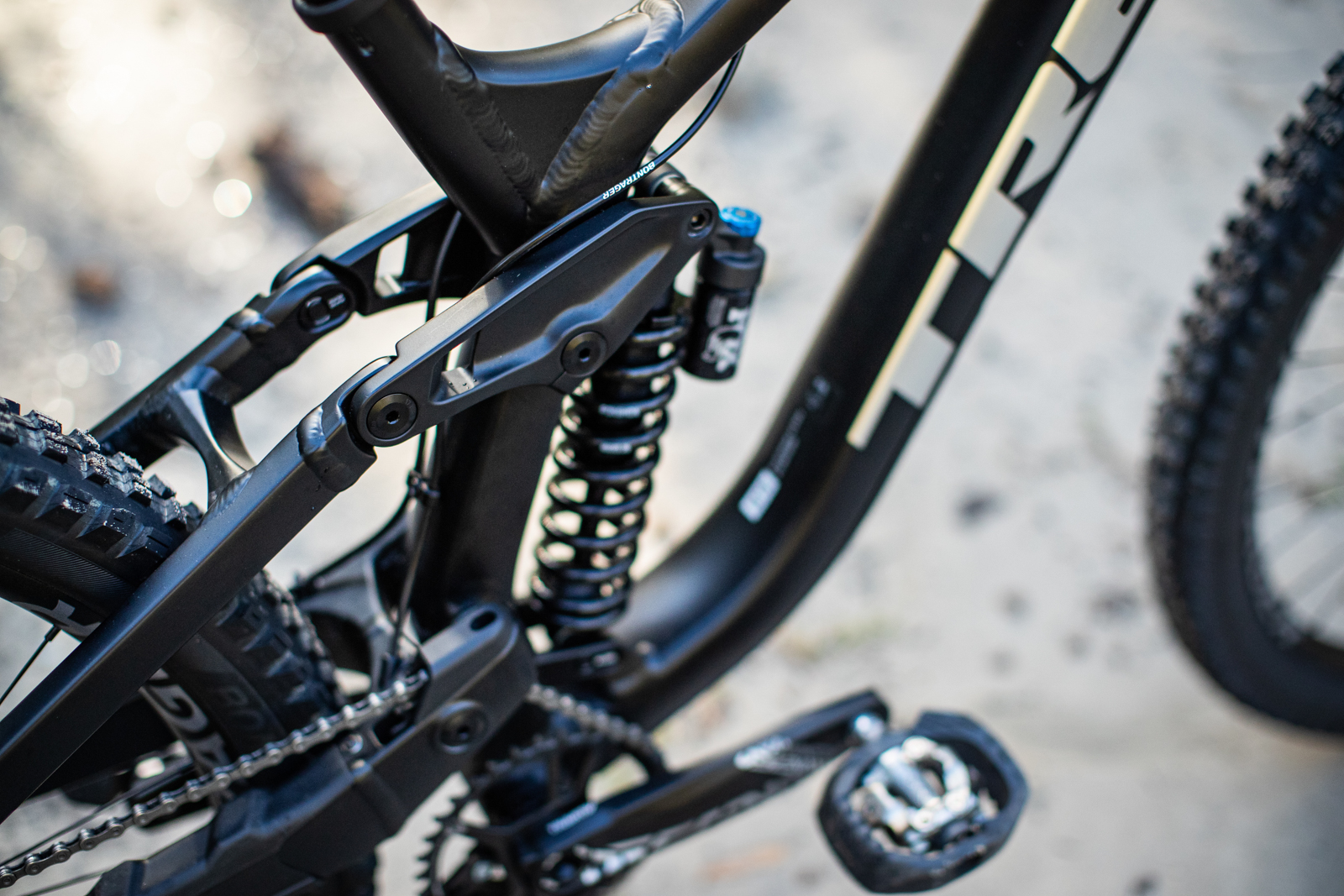
The new Session is compatible with both coil and air shocks.

The move to a high pivot idler design is the main revision on the new Session.
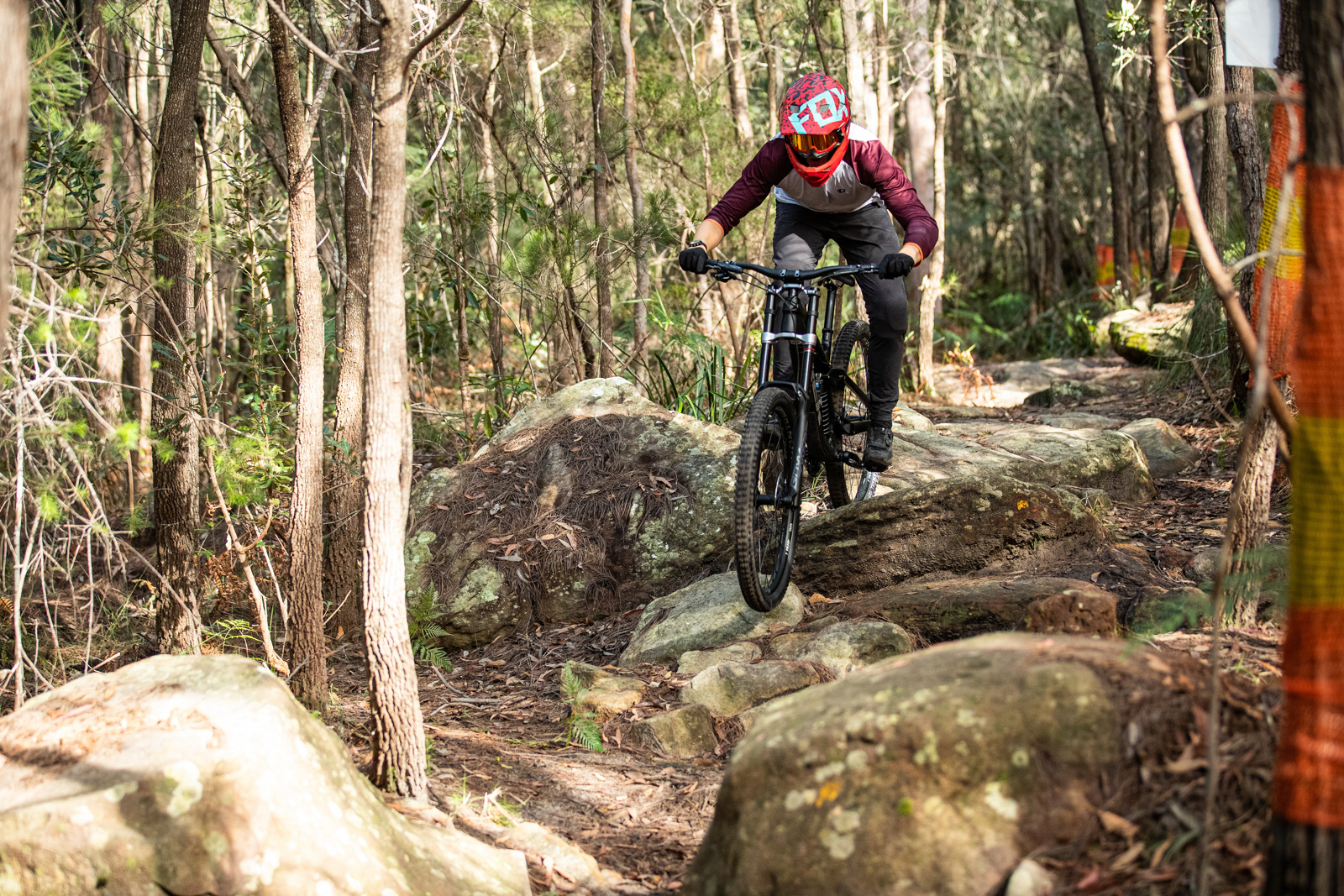
The Session eats up this type of terrain.

7 speed GX is a fantastic drivetrain for downhill.
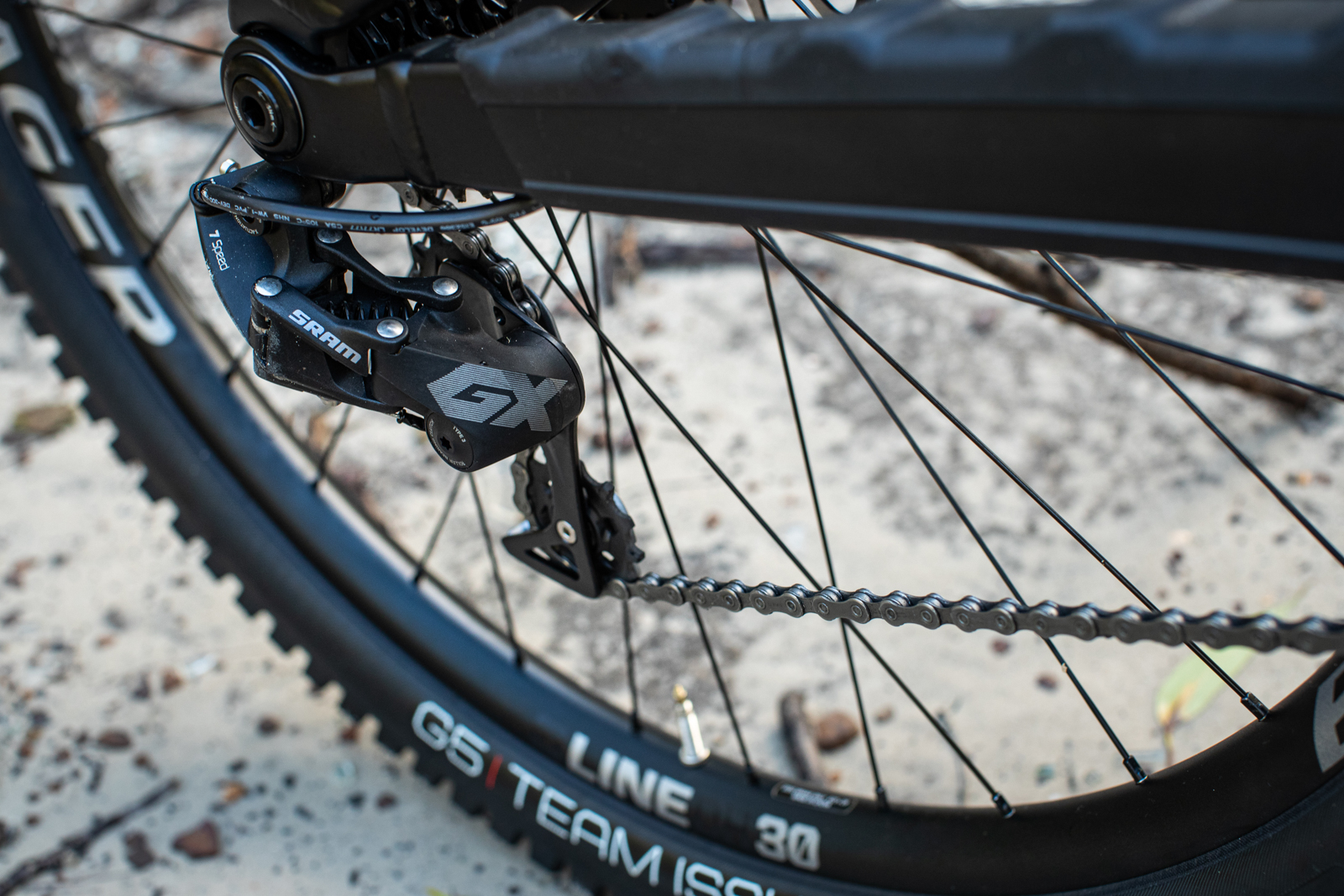
The smaller derailleur is well protected from rock strikes.
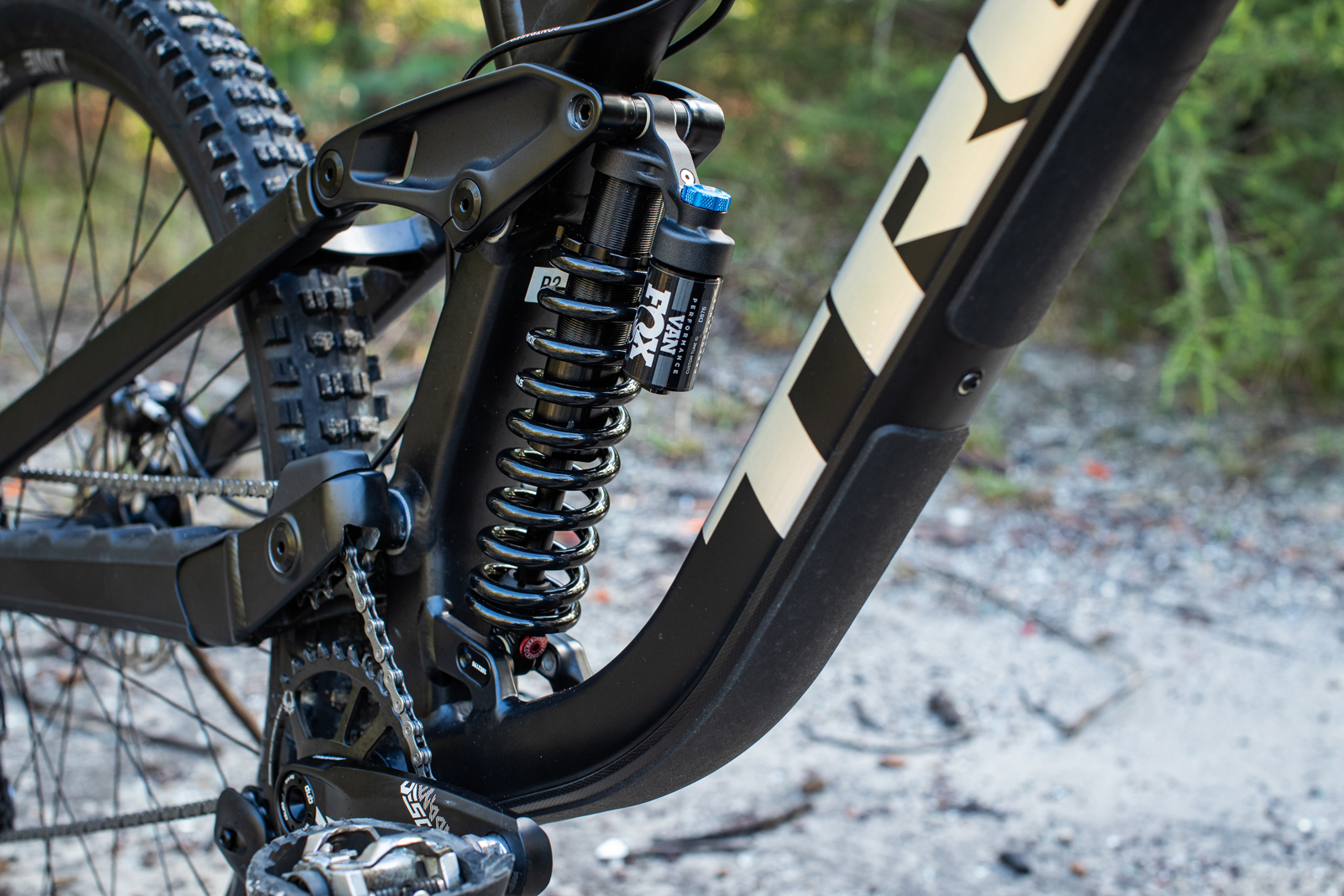
We were impressed by the performance of the Fox VAN Performance Shock.
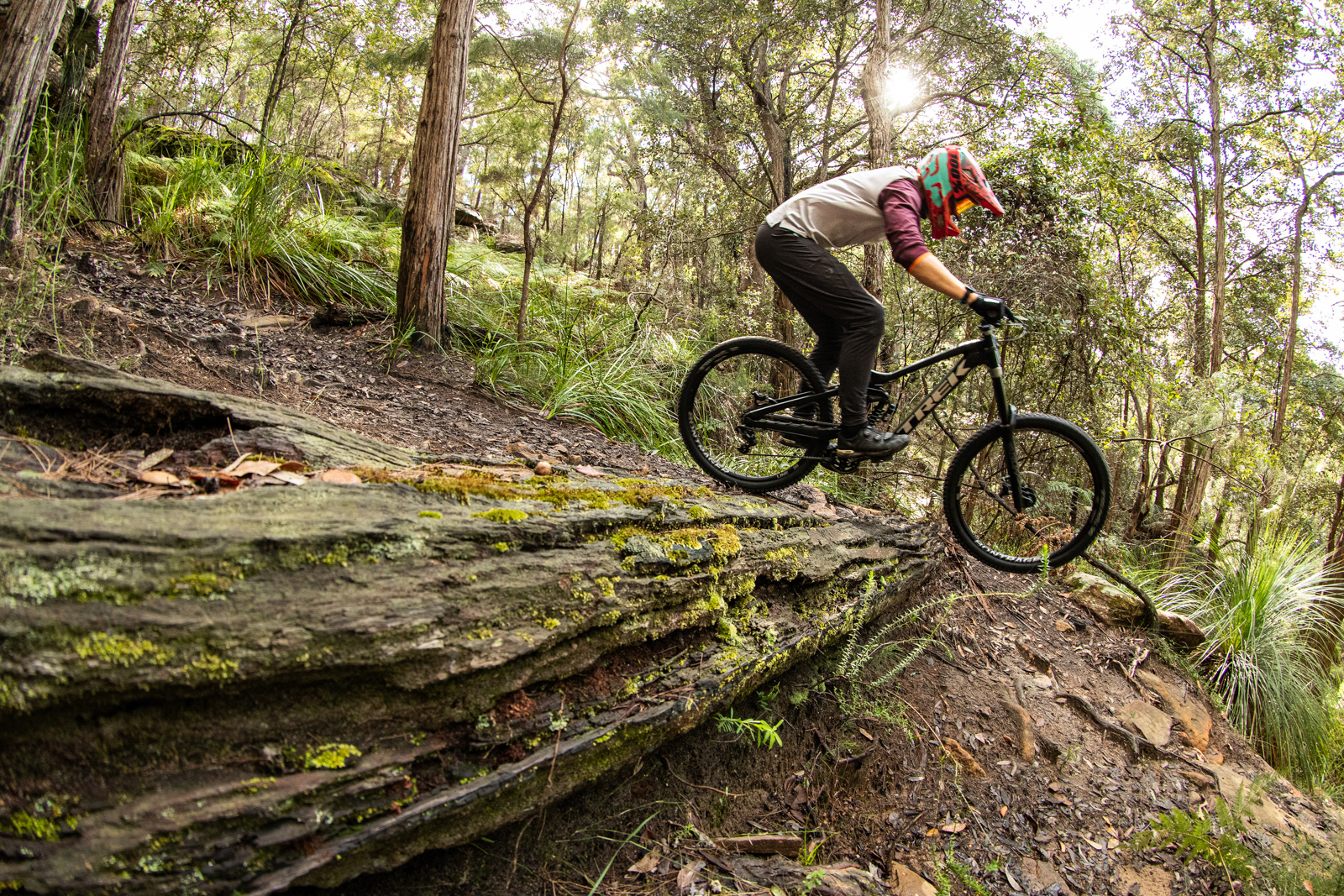
Reckless swinging off the back is encouraged by the Session.
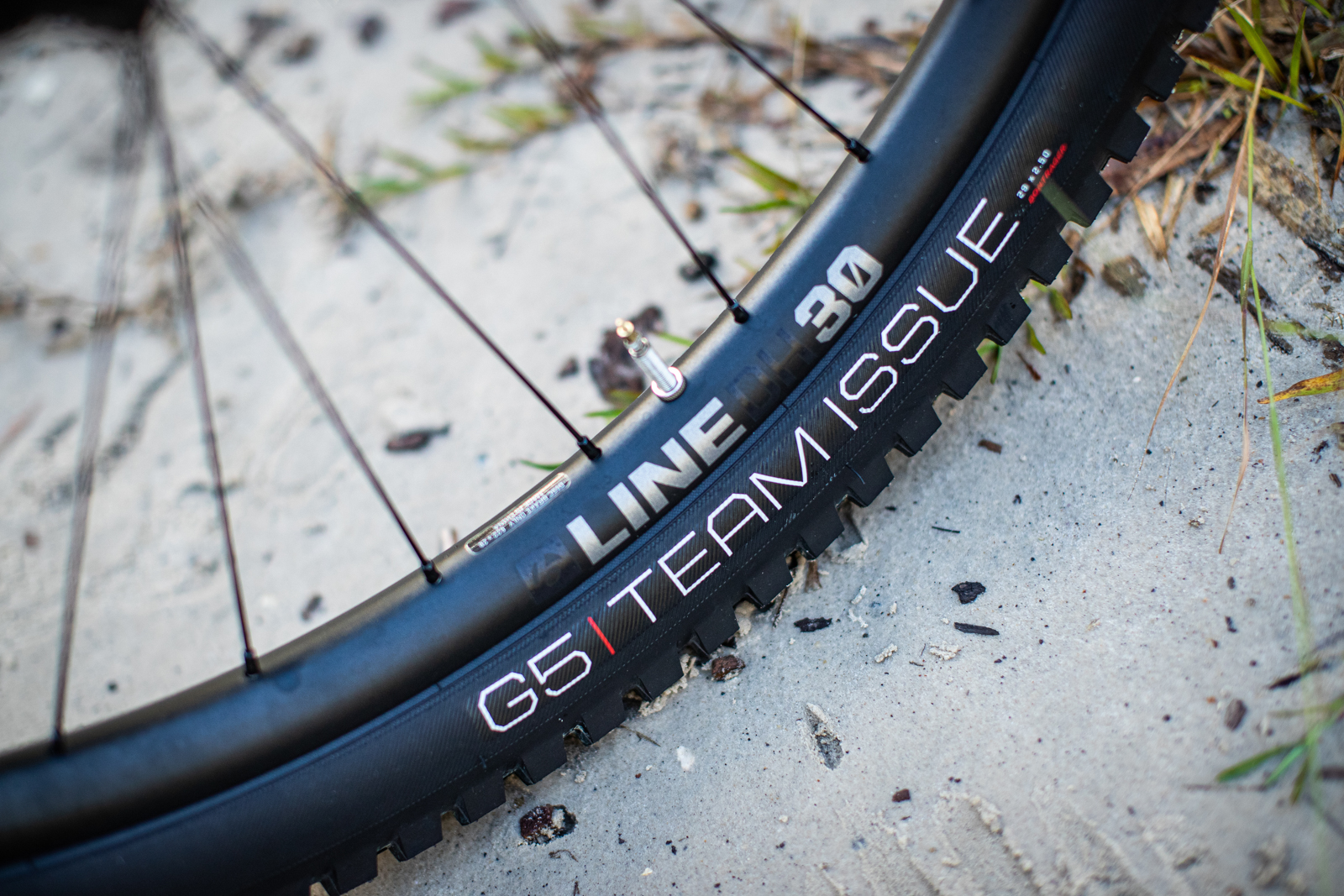
Bontrager wheels and tyres got the job done.
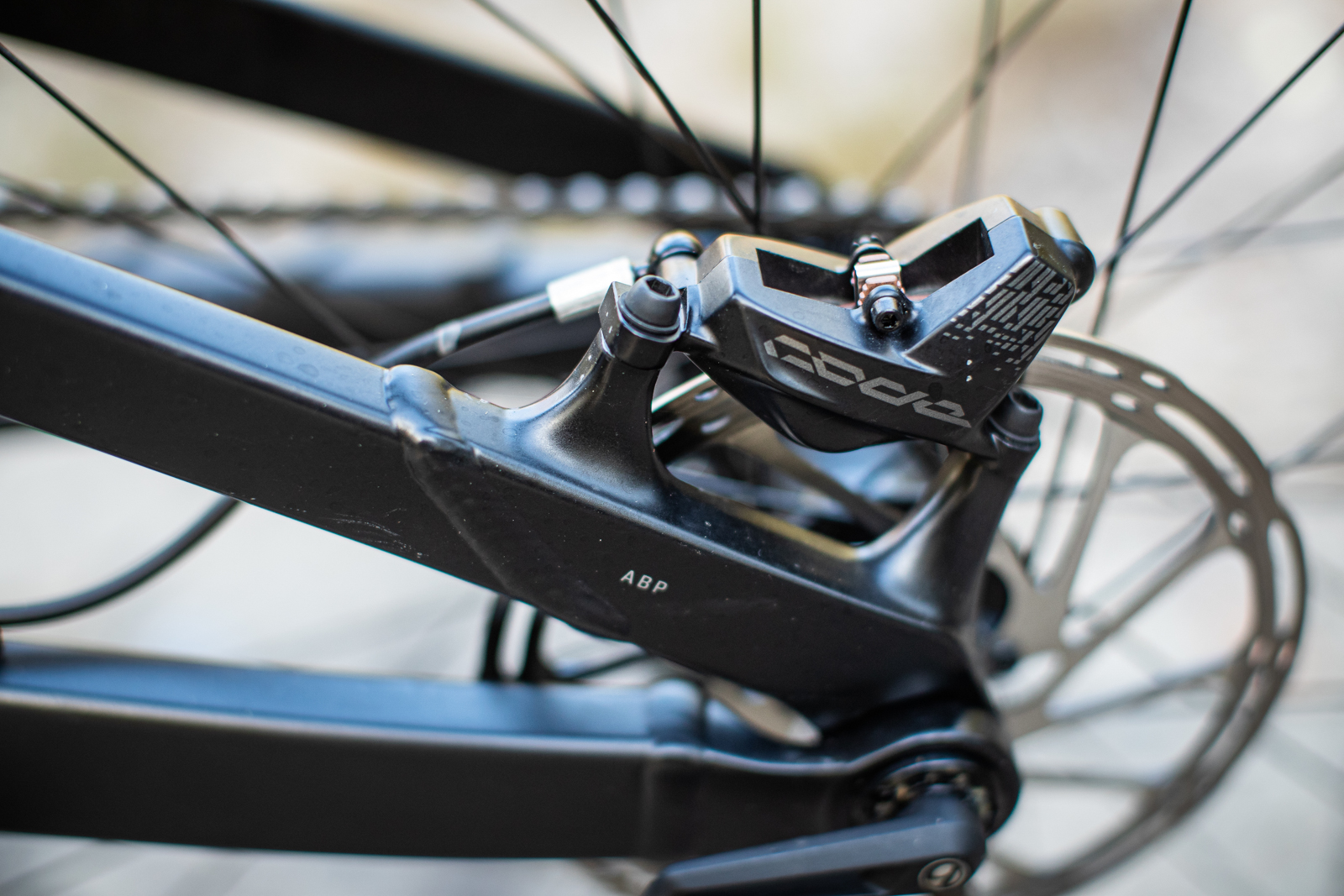
SRAM's Code R brakes offer great modulation.
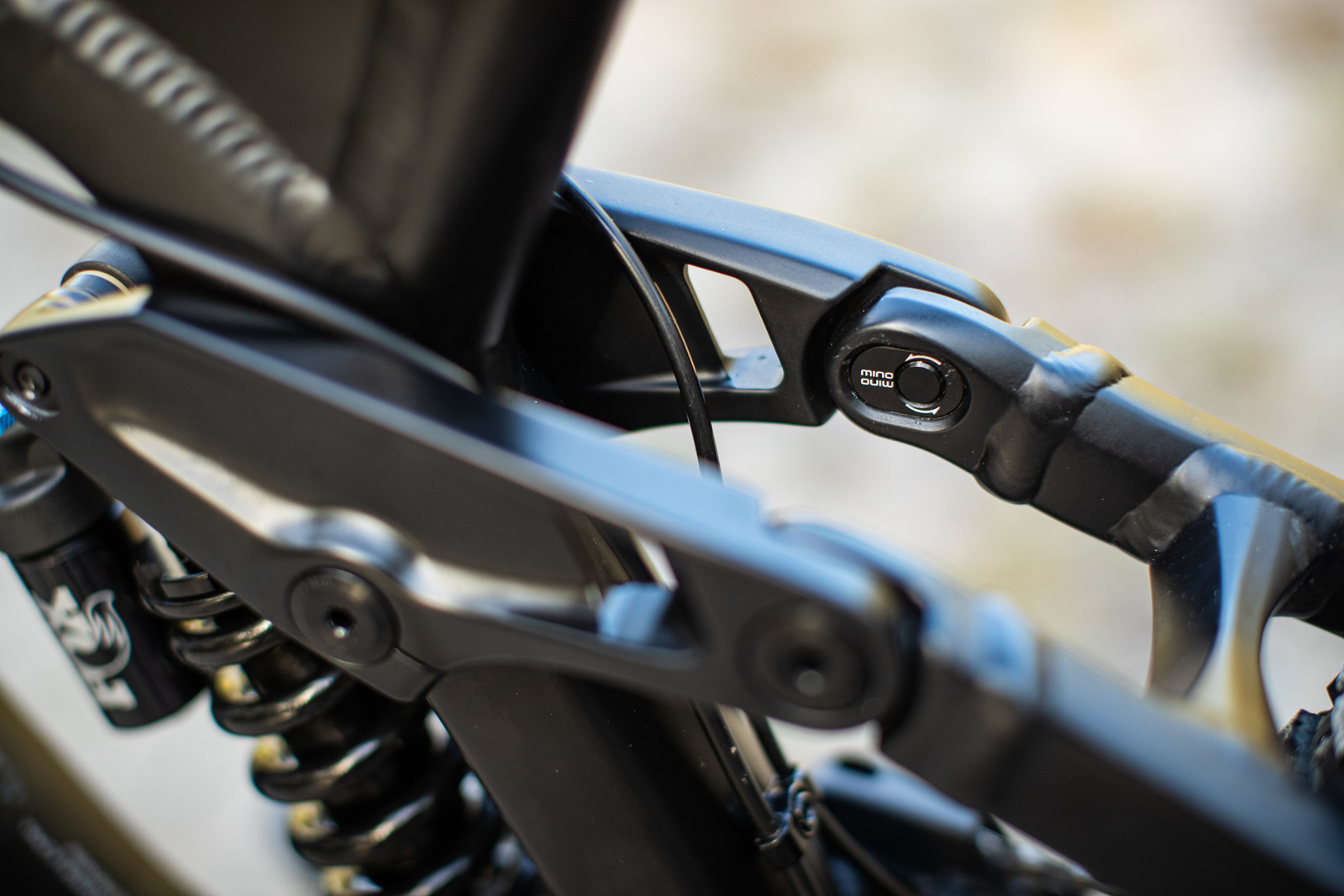
The new Session retains Trek's Mino Link geometry adjustability.
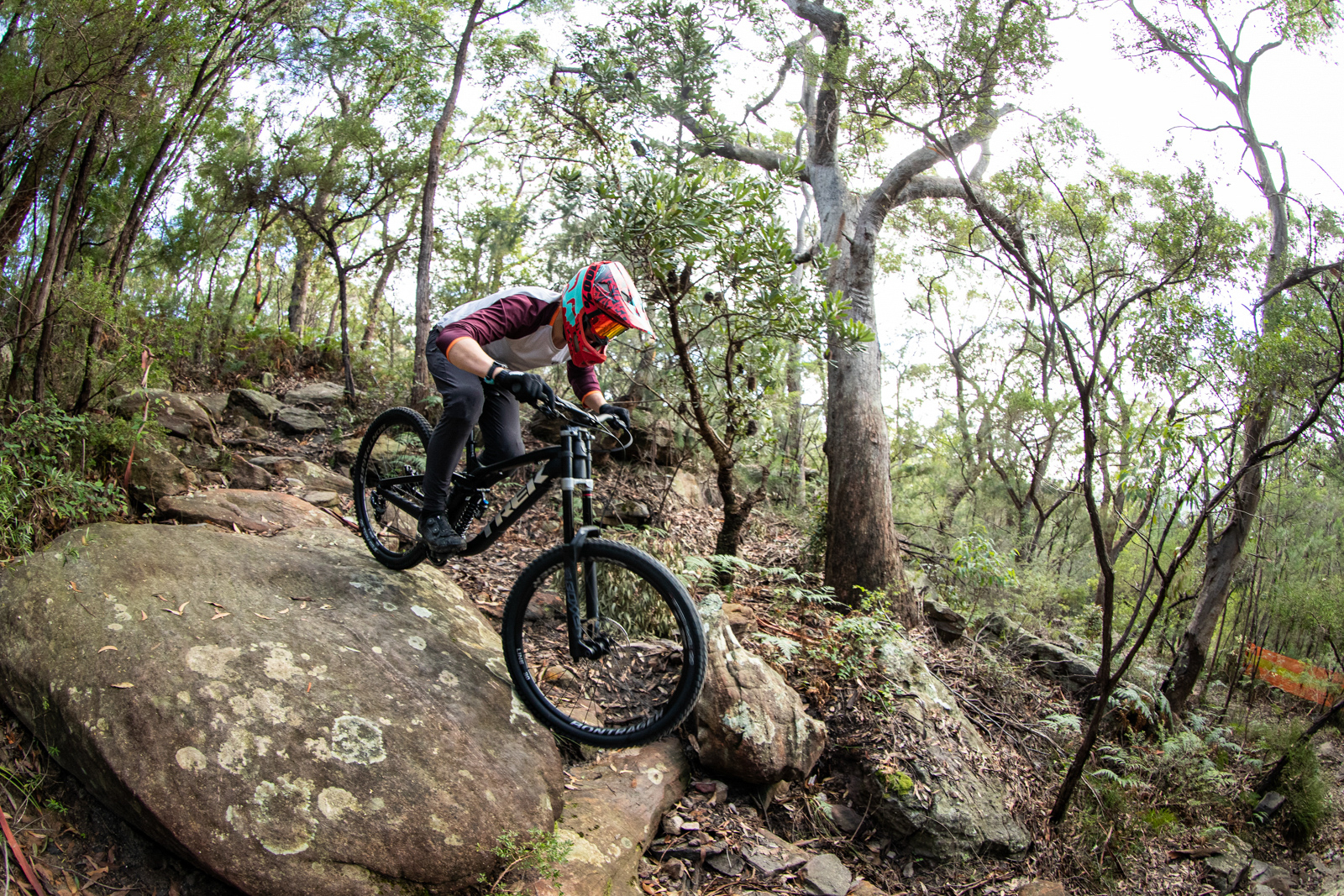
The Session was confidence inspiring in chunky terrain.

There's also two levels of rear shock progression on offer, 20 percent and 25 percent.
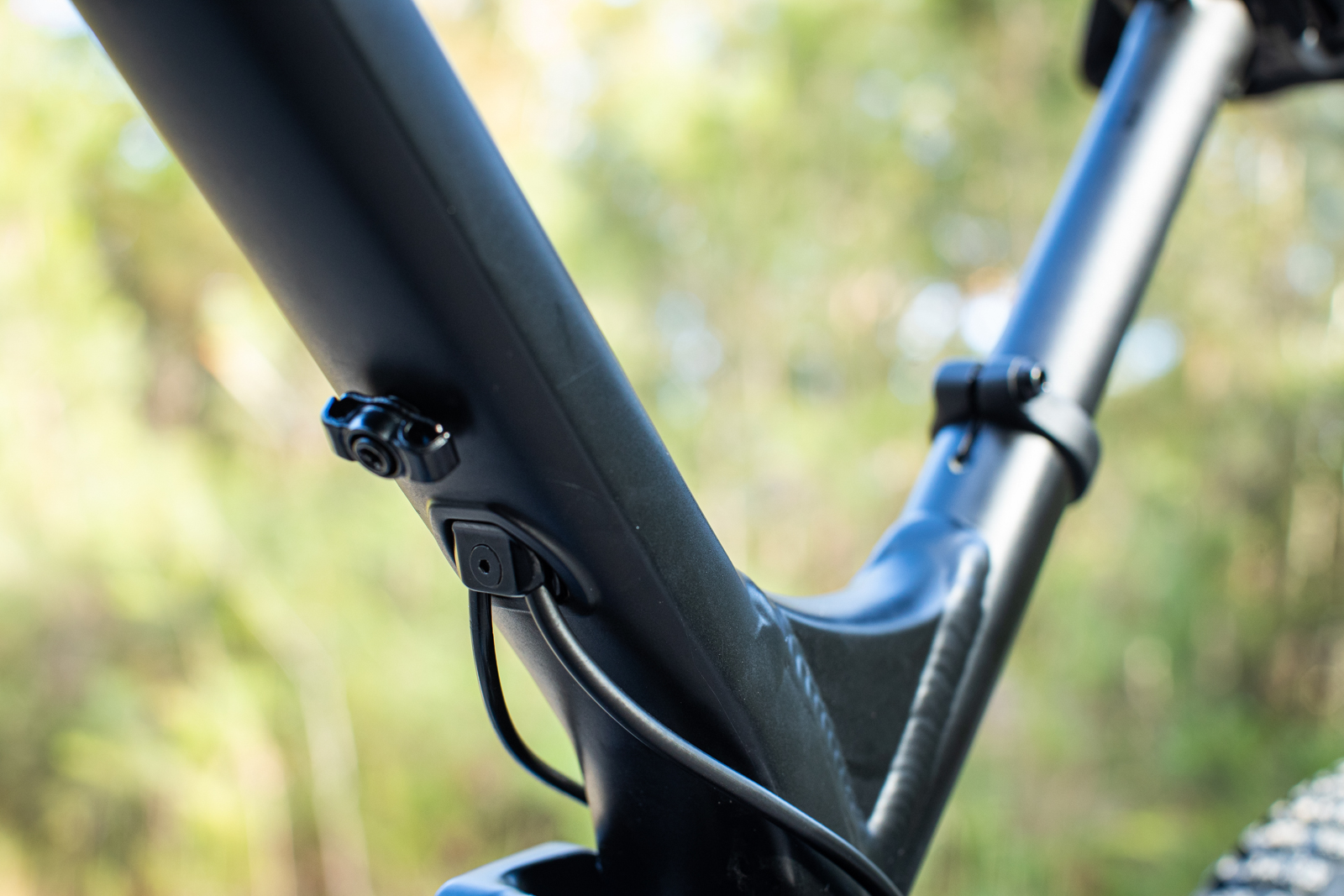
Internal or external - it's your choice with the new Session.
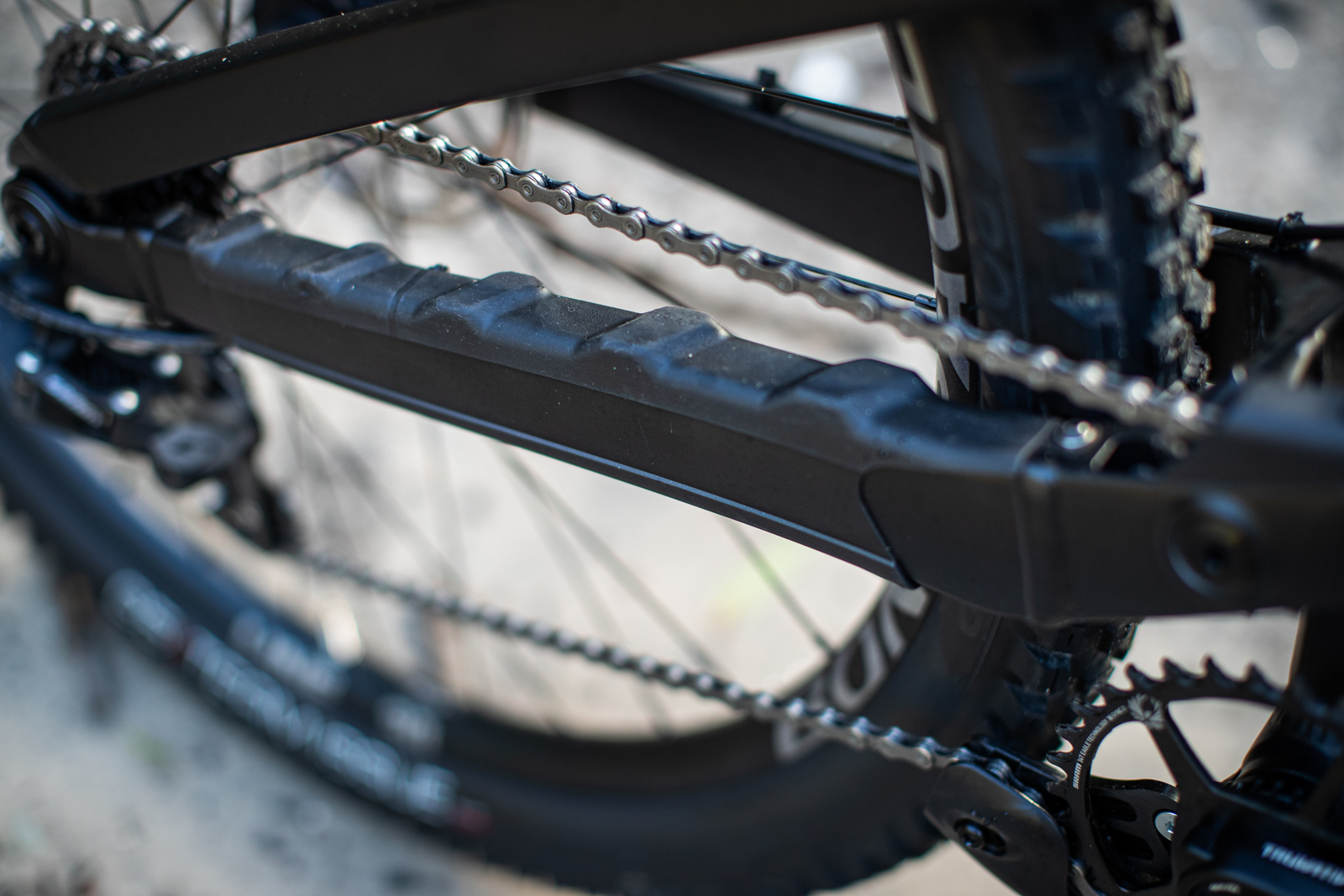
The chainstay protection kept things reasonably quiet throughout testing.
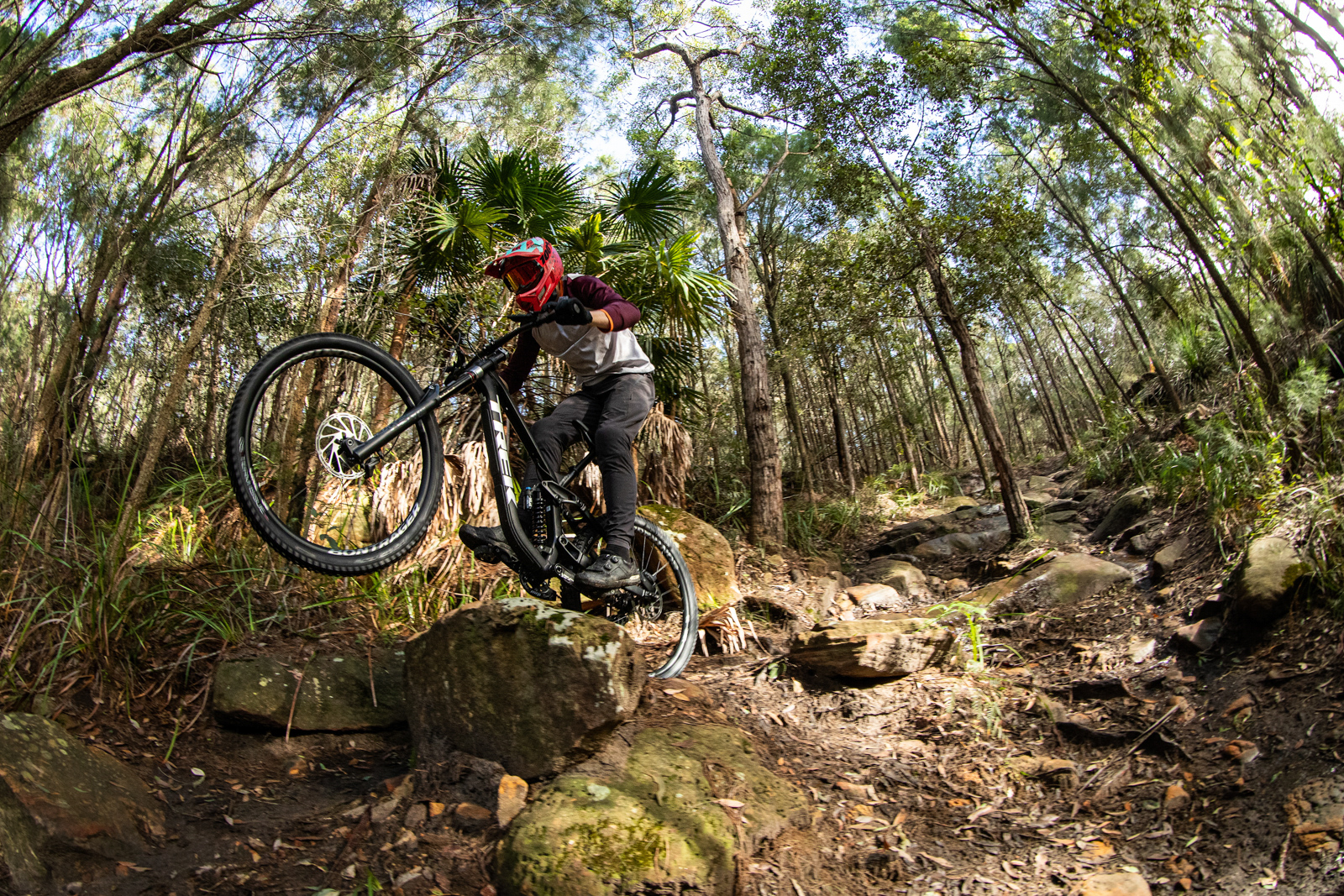
The rear wheel was used and abused throughout testing.
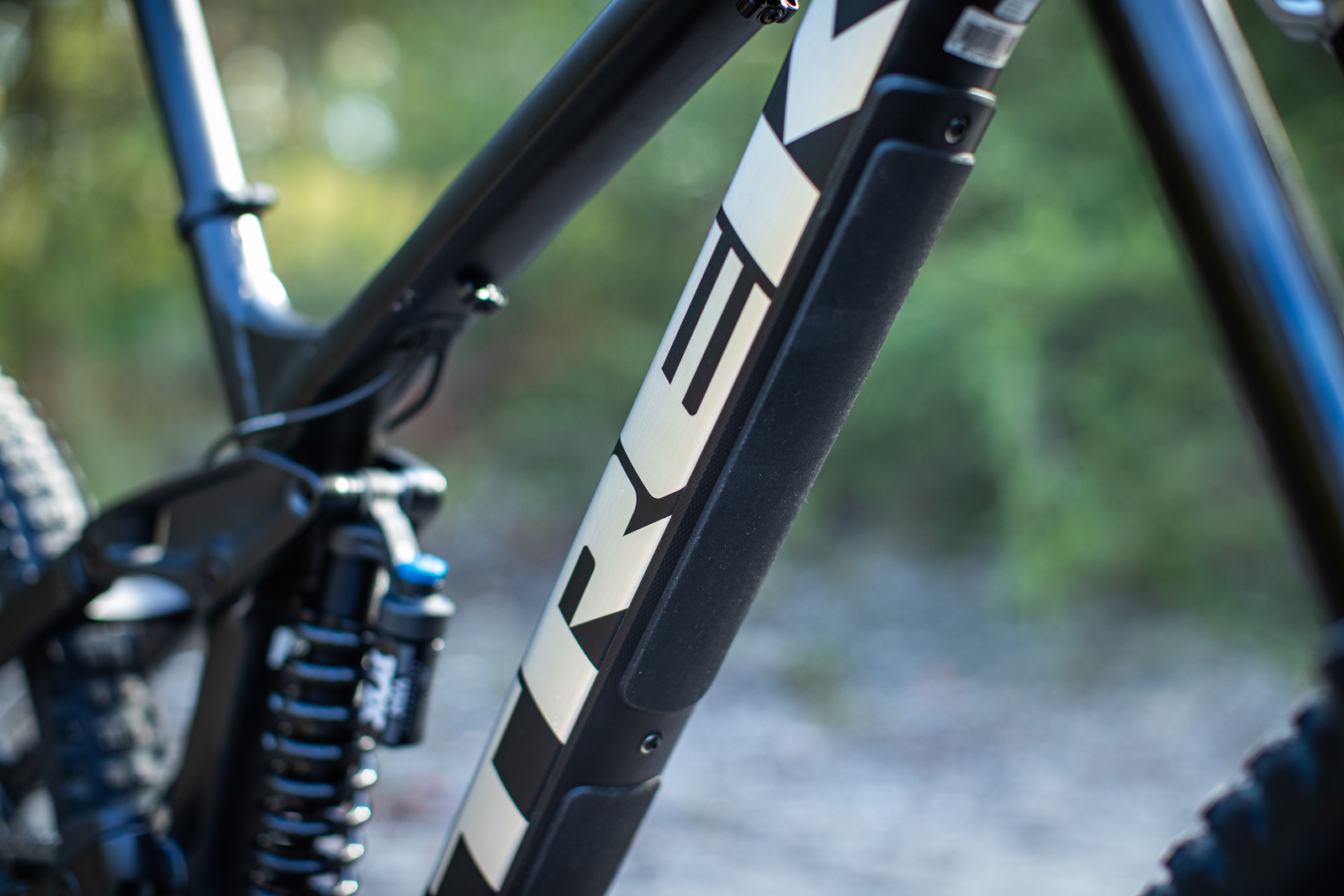
The new Session features sturdy and replaceable downtube protection.
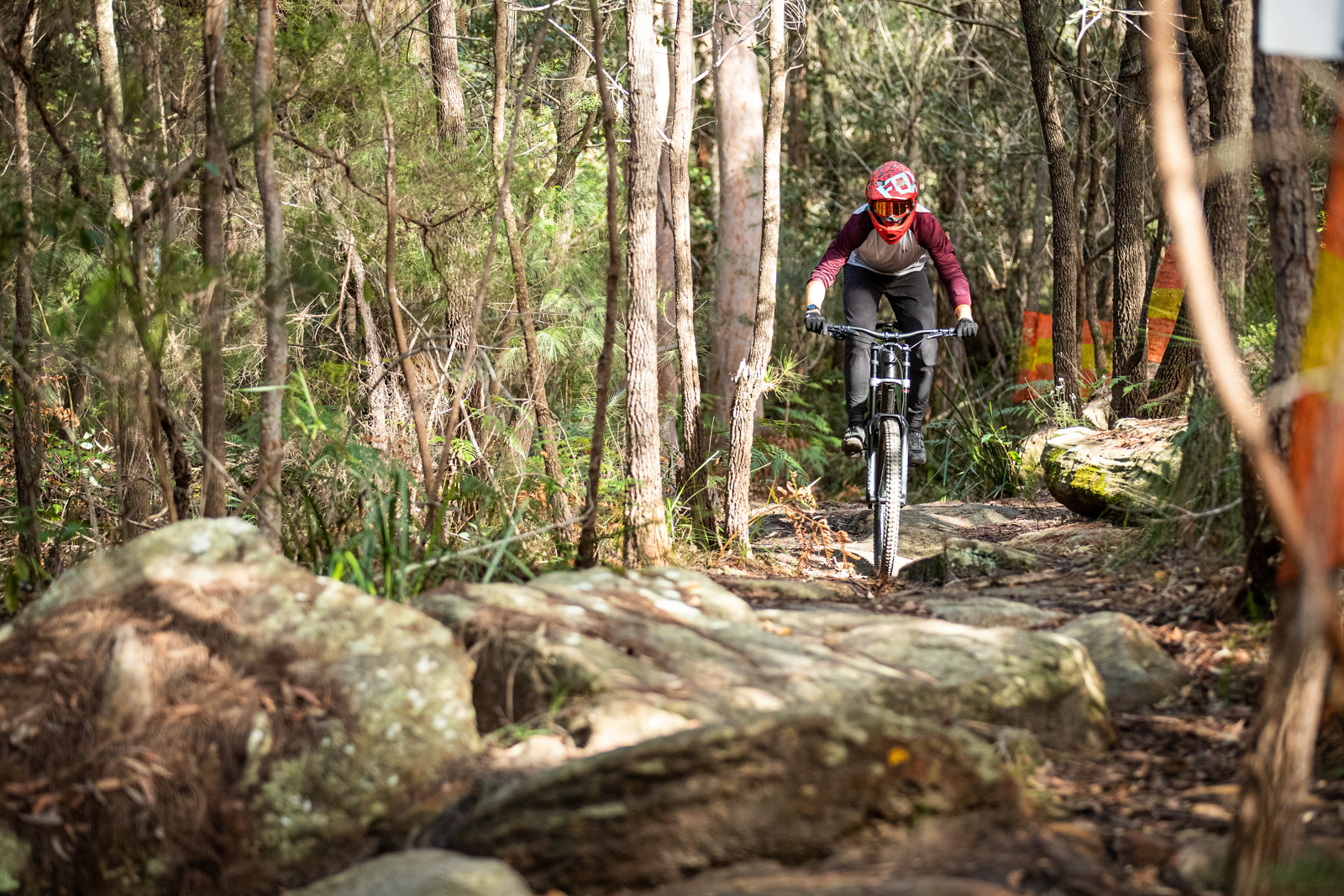
The new Session is quite simply a fantastic downhill bike.

TESTED: 2022 Trek Session 8

AMB tests the all new Trek Session - high pivot and full noise.
Words: Will Shaw
Photos: TBS
The Trek Session is the bike with the most UCI Downhill World Cup wins to its name (38 to be exact). It’s also the downhill bike by which all others are judged. The phrase ‘looks like a Session’ recognises the Session’s distinctive look and consistent performance for the last two decades.
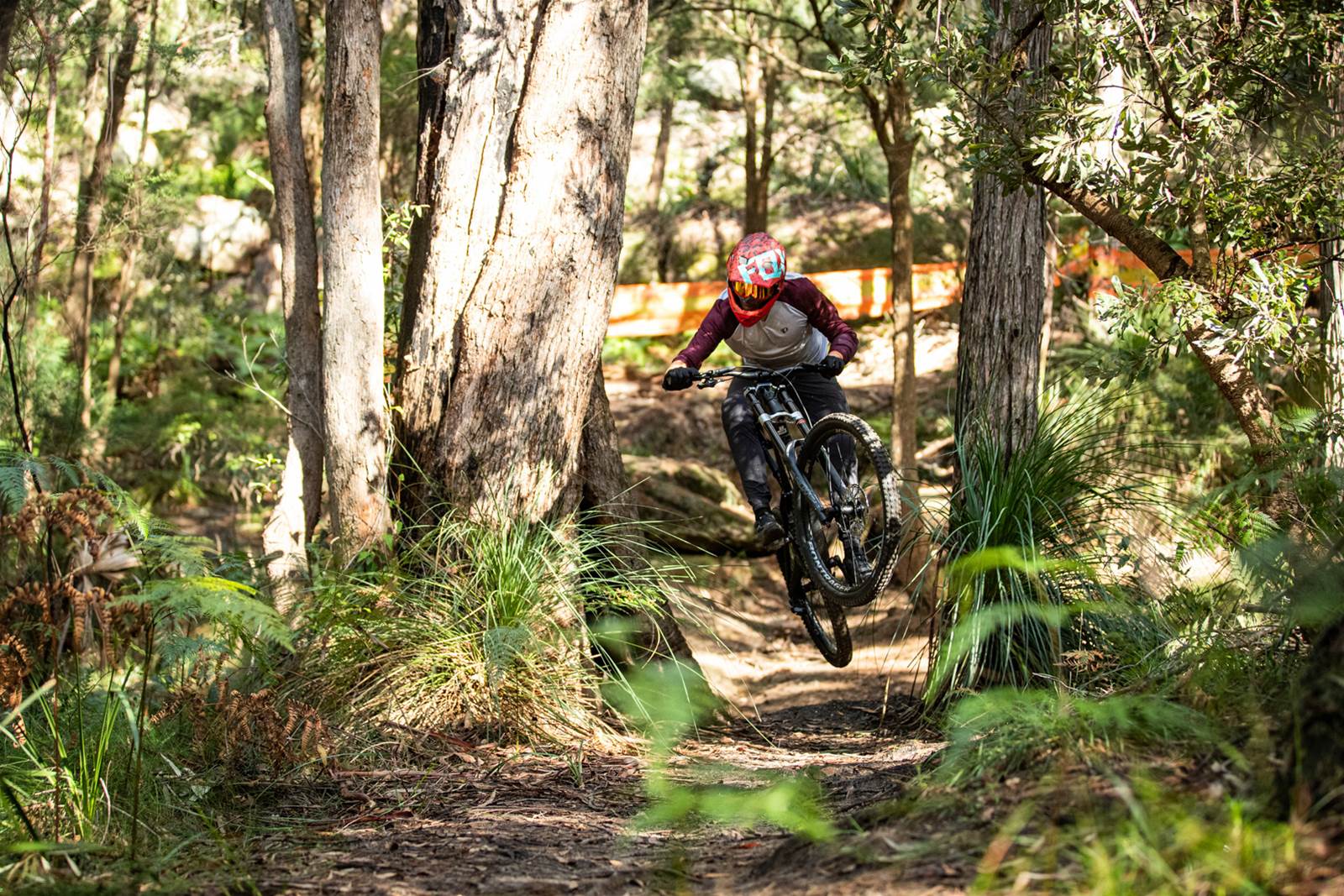
In recent years high pivot downhill bikes with idler pulleys (I’ll just say high pivot from now on) have become more and more popular. The Commencal Supreme is not only dominant at the top of the men's and women's fields but is also the bike of choice for privateers. Norco’s HSP downhill bike and GT’s current iteration of the Fury are also high pivot designs.
If you’re somewhat new to the sport, you’d be forgiven for thinking that this design style is one that’s relatively new. Whilst Trek’s brand-new Session using a high pivot design is different to its predecessor, it’s a concept Trek first implemented in their gravity line in 2003. The Trek Diesel was a high pivot bike that freeride legend and current Trek Gravity Team Manager Andrew Shandro piloted to second place in the 2003 Red Bull Rampage.
Fast forward nearly 20 years, and on paper the latest iteration of the Session ticks all the boxes for a high-performance gravity machine. The bike’s high pivot design has the tick of approval from current World Champion Reece Wilson, as well as team members Charlie Harrison, Loris Vergier, and Vali Höll.
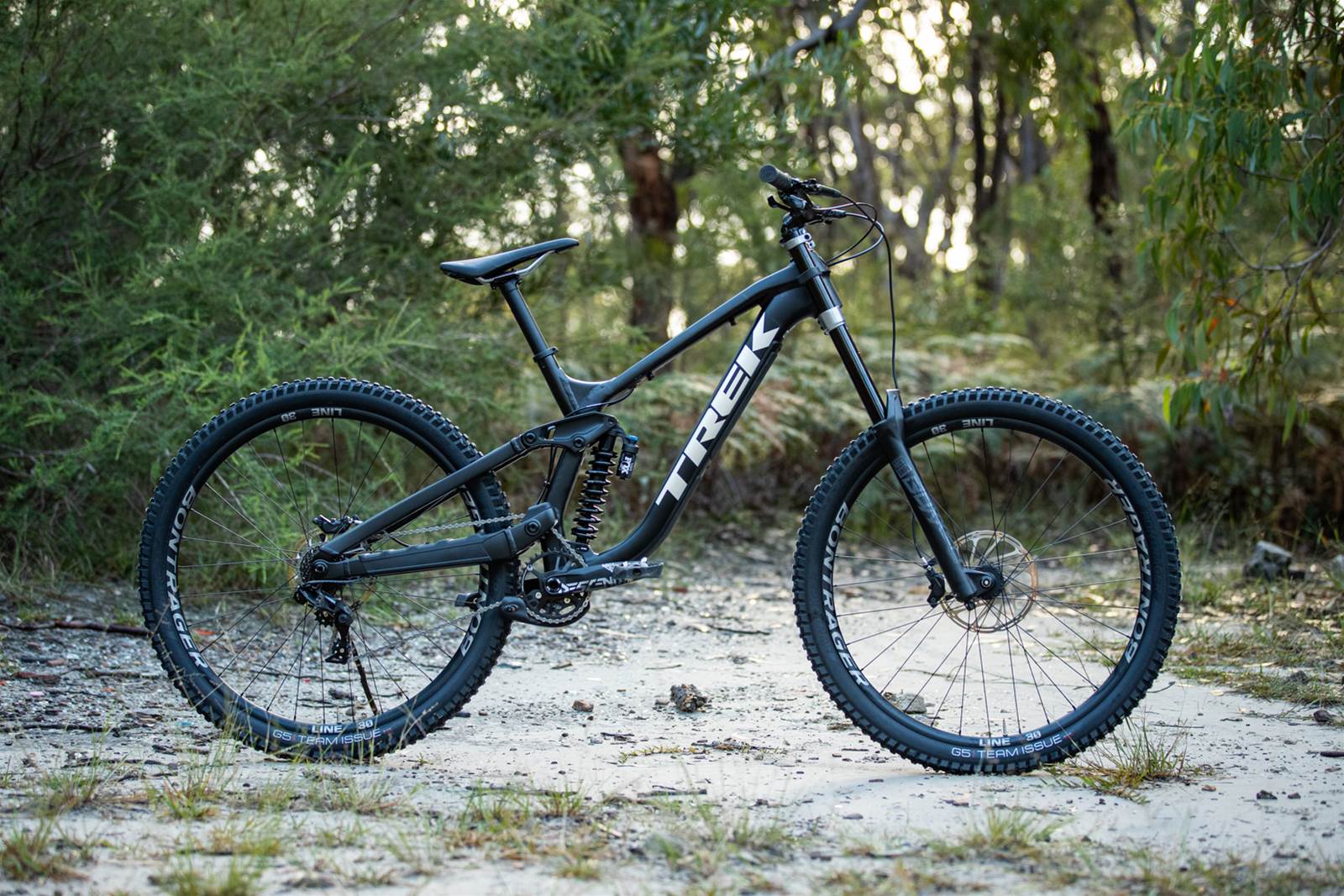
Initial Impressions:
The new Session is an entirely aluminium affair (with the exception of the magnesium rocker link). This is another trend in the current crop of downhill bikes, and Trek say this is a result of direct rider feedback from their pro athletes. According to John Riley (Trek’s Director of Mountain Bikes), there was a feeling that the aluminium design kept the bike ‘calmer’ in rough terrain.
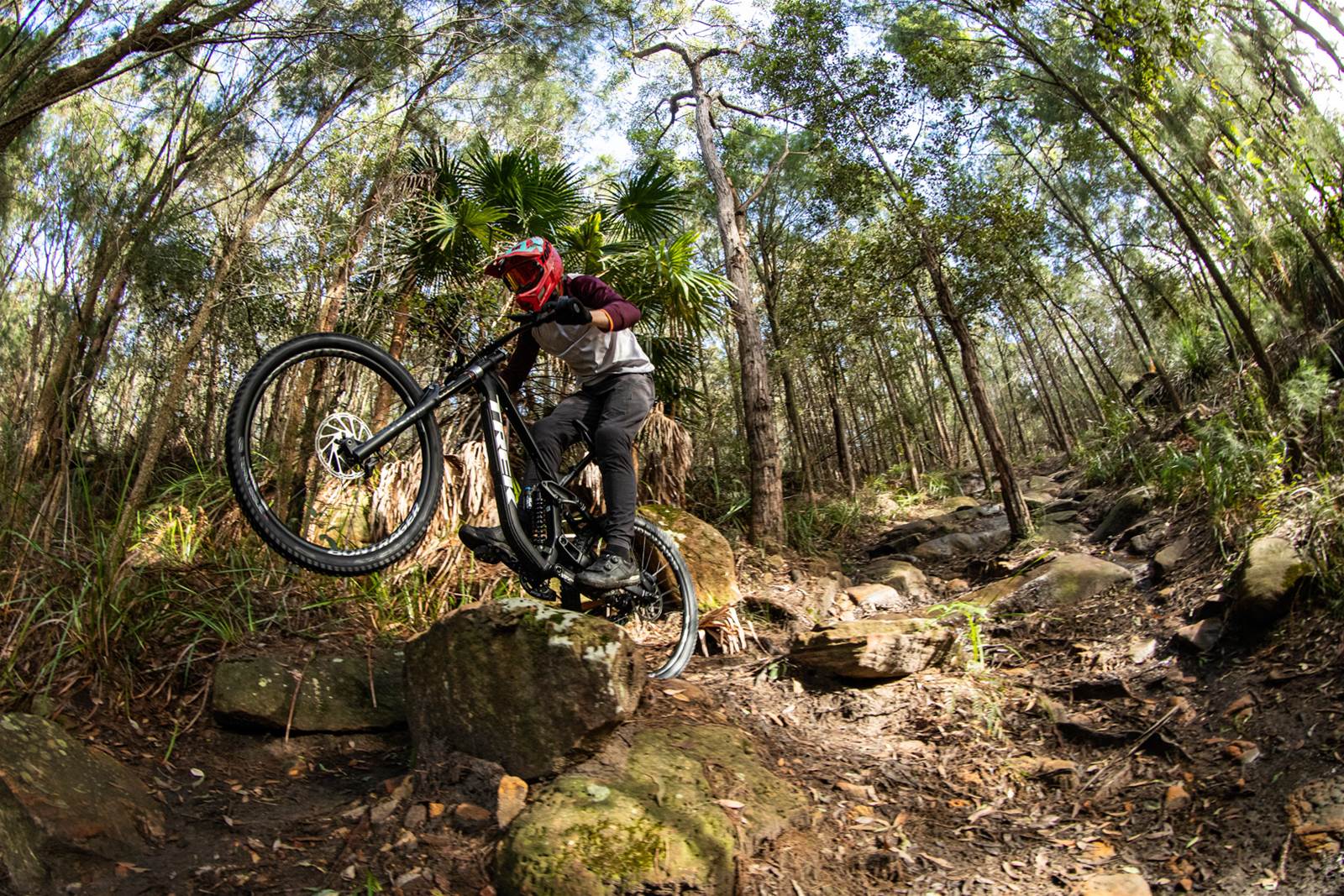
Despite the move to a high pivot design, the shape of the Session remains immediately recognisable, and the bike features classic Trek technologies such as the ABP (Active Braking Pivot), Mino Link adjustability, and a magnesium rocker link.
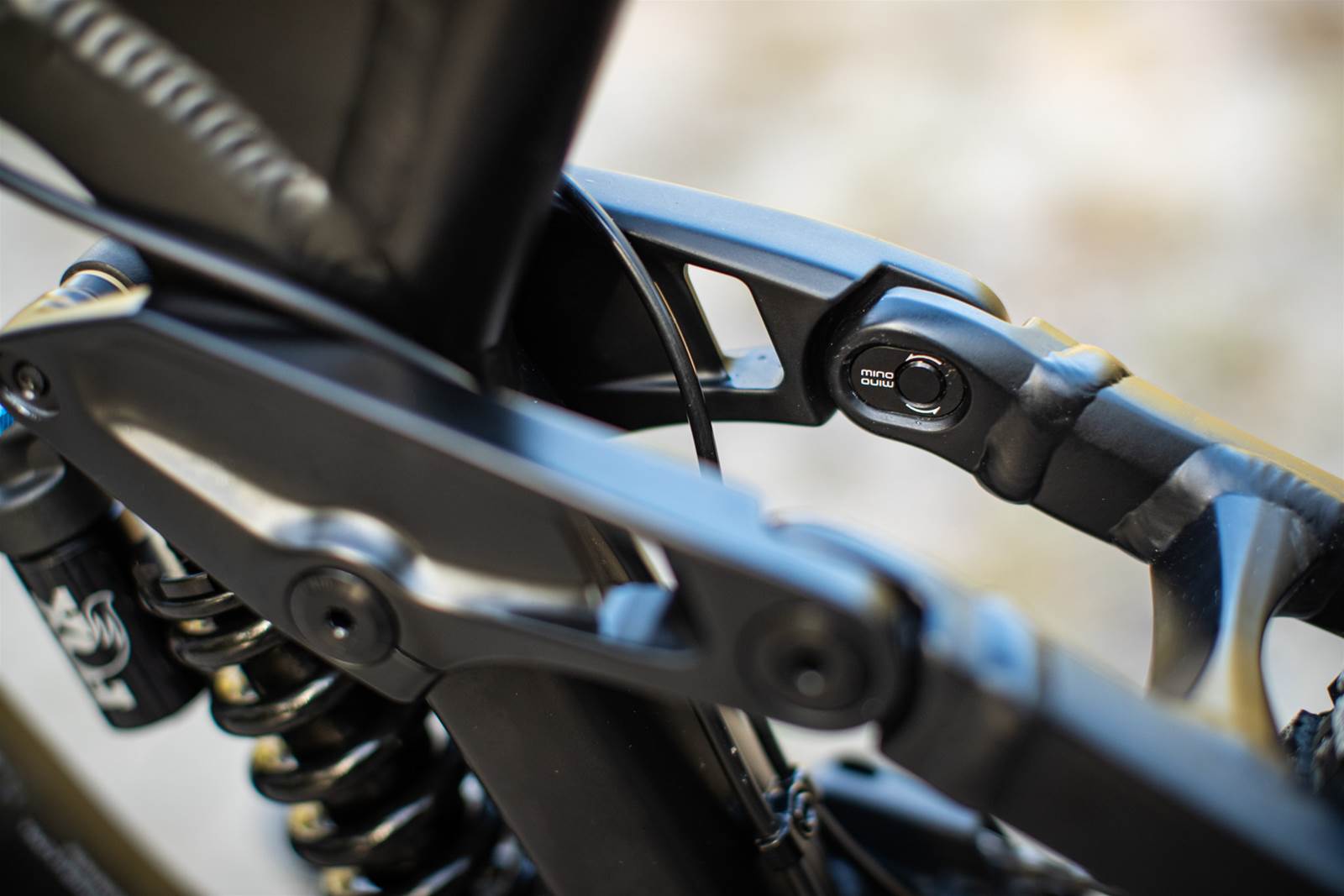
My first impression of the bike was that it focuses on practicality over aesthetics. The down tube protection is extensive and removable, the chain stay protector is far beefier than many out there, and even the welds on the frame look like they mean business.

The frame has some great features that Trek deserves to be commended on. The replaceable down tube guard is gargantuan, a must on a bike that’s going to have things striking it frequently. The standard cable routing is internal through the top tube, but there’s also the option to route cables externally on the underside of the top tube. Trek have done this to allow for fast race day swaps and repairs, or for customers who want the bike to be easier to work on. Whilst the unused cable guides underneath the top tube might look messy to some, I know quite a few racers and bike park riders who’ll appreciate this option.
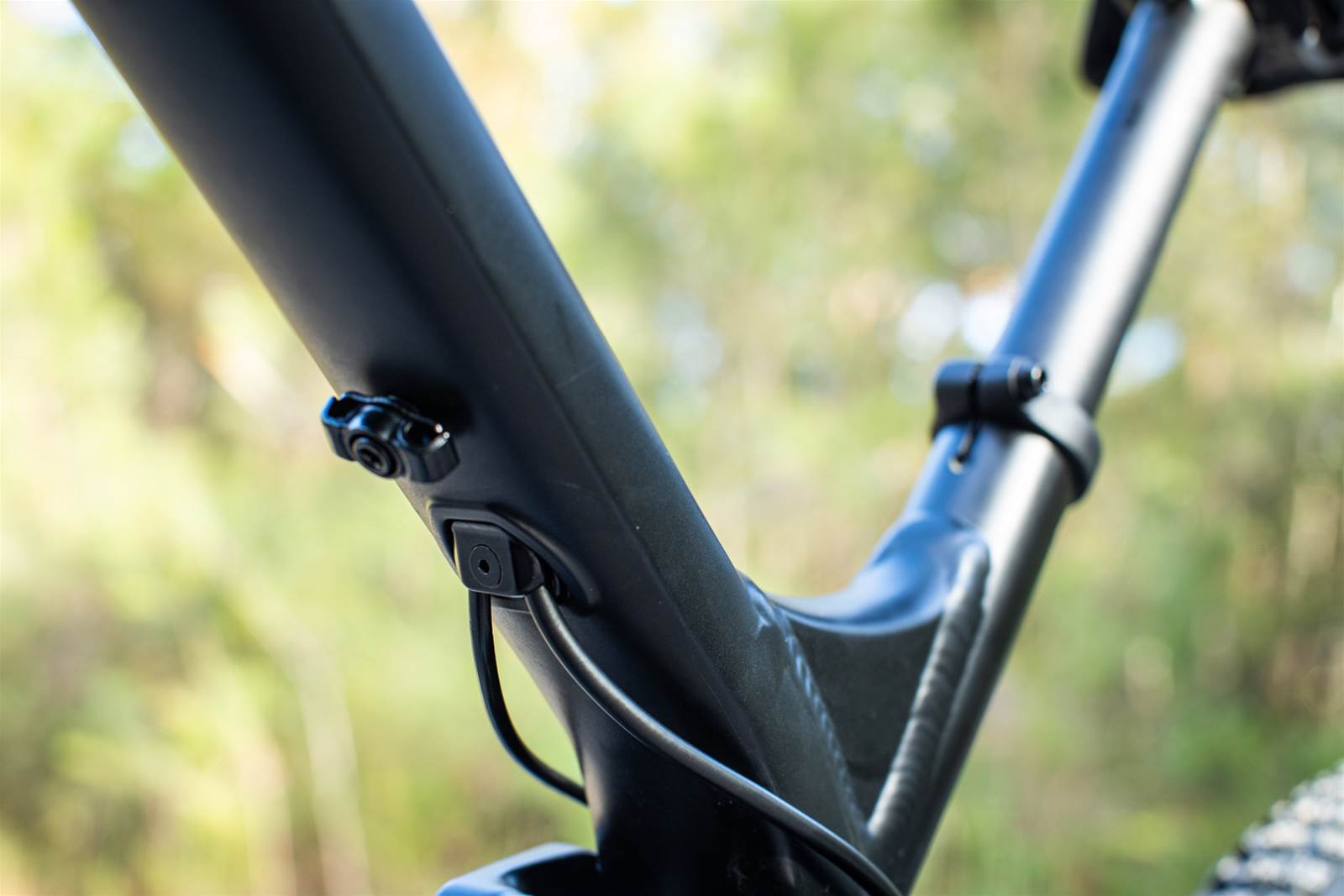
The Session 8 model I received was in the R2 size. Trek are offering three sizes of the Session, and are doing away with the traditional ‘small, medium, large’ sizing structure, much like Specialized’s S system. The Session range comes in R1, R2, and R3.
What Trek have done with the three sizes is pretty nifty. The standover is pretty much the same (754.6mm, 758.7mm, 756.8mm) between the sizes, so you’re selecting a bike on your preferred reach (446.8mm, 471.6mm, 448.2mm) and chainstay length (435.1mm, 441.1mm, 448.2mm).
The bike ships as standard with the Mino Link in the high position, and that’s the geometry I’ve discussed above. Moving the Mino Link to the low position will shorten the reach and lengthen the chain stays among other things. Despite having varying chain stay lengths depending on size, it’s actually the same chain stay used throughout, with the bottom bracket position changing slightly with each frame size.
My Session 8 in size R2 weighed in at 17.95kg without pedals. All complete bikes come in 29” only, however all three combinations of full 29”, mullet (29”/27.5”), and full 27.5” can be run on the Session using the Mino Link adjustment, and a headset cup extender in the case of full 27.5”. For both mullet and full 27.5” setups you’ll need to run the Mino Link in the high position, which is the setting the bike comes in as standard.
Another feature Trek have added with the new Session is the ability to adjust the bike’s progressivity. A flip chip in the lower shock mount allows for two amounts of progression, 20 percent and 25 percent. The bike ships with 25 percent progressivity as standard, and it’s the setting I ran throughout testing.
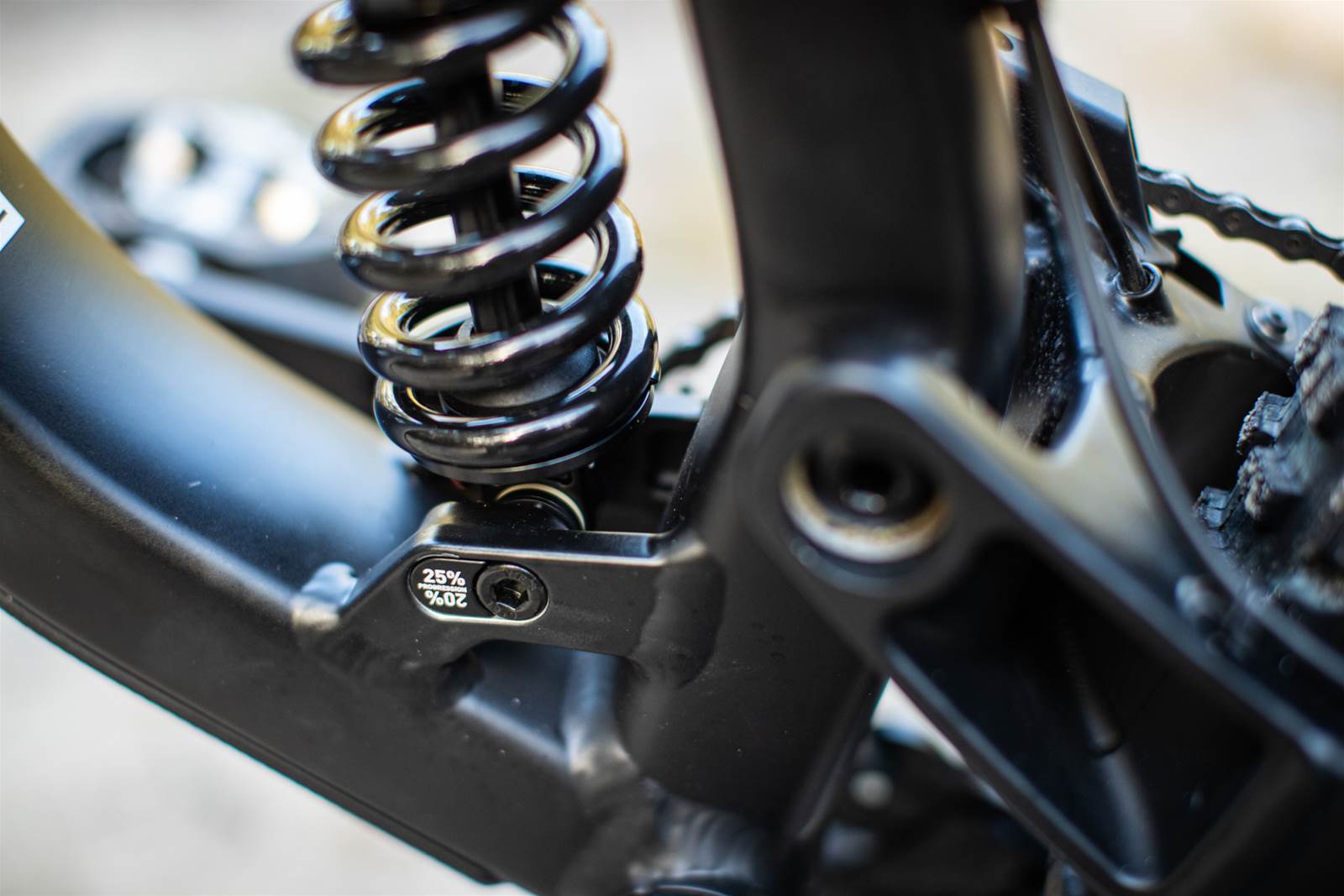
The Session in Australia is available as the complete Session 8 tested here, as well as the Session 9 frame set. The frame set comes in the team replica colour with a Fox Performance DHX shock and the headset extender to run 27.5” wheels front and rear. The 8 model I tested is $6999, whilst the frame set will set you back $4999.
Tester: Will Shaw
Riding Experience: More Queenstown Bike Park laps than my bank account appreciates
Generally Rides: Moustache Game 6, Norco One25, Norco Section A1
Height: 185cm
Weight: 84kg
Bike Test Track: Ourimbah DH, Awaba DH, Mona Vale DH
On the Trail:
I immediately felt comfortable aboard the new Session. Trek have added about 30mm of reach onto each size of the new bike, and the 471mm reach on the R2 size felt bang on from the get-go. I wouldn’t have minded lopping an inch or so off the bike’s seatpost, but this is easily done at your local dealer if necessary. The cockpit was similarly easy to get along with.
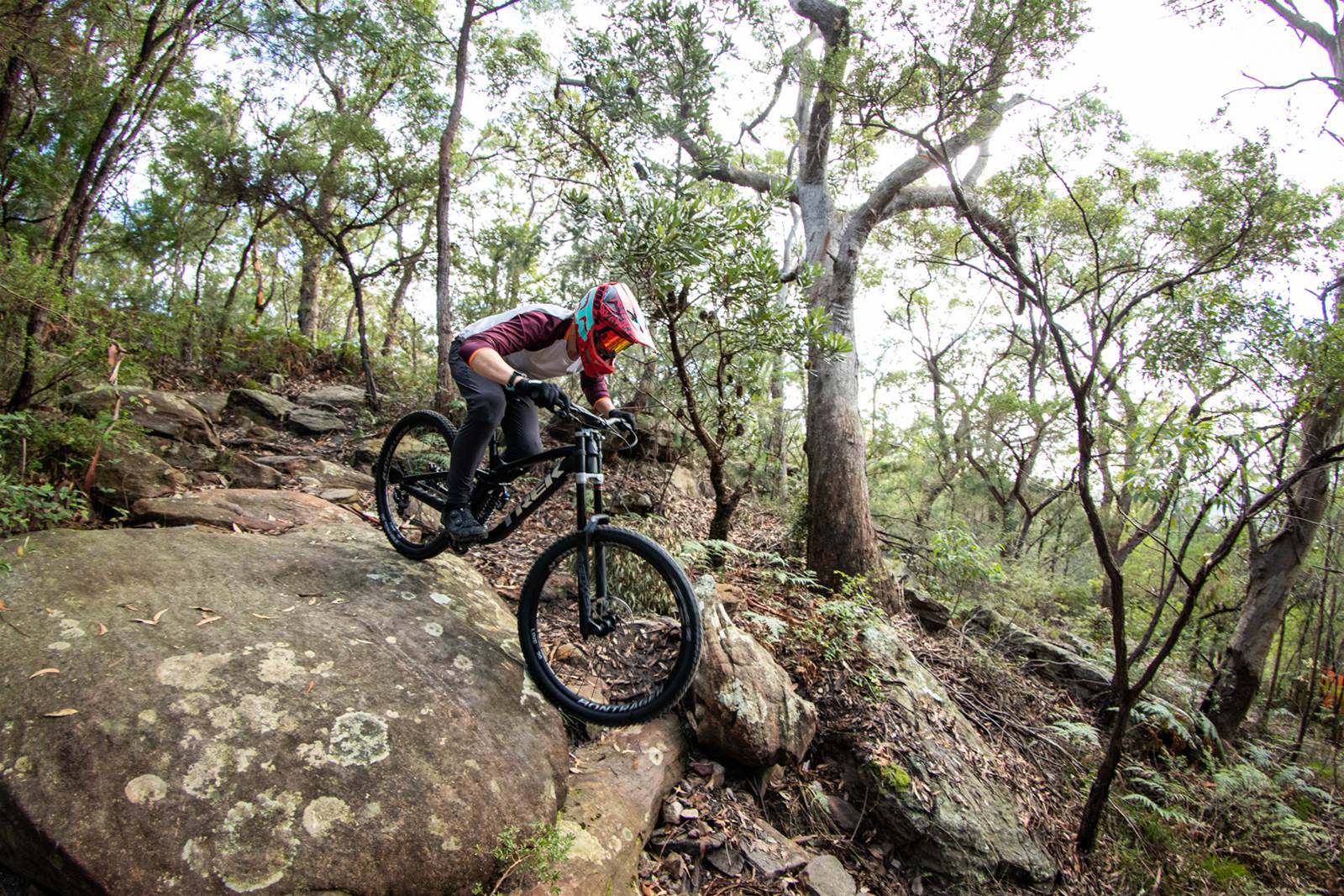
In terms of setting the bike up, The Boxxer Select fork and Fox VAN rear shock don’t have lots of adjustments to worry about. Once the fork’s sag is where you want it to be there’s rebound damping and five clicks of compression to play with. On the rear shock there’s low-speed compression and rebound adjustment.
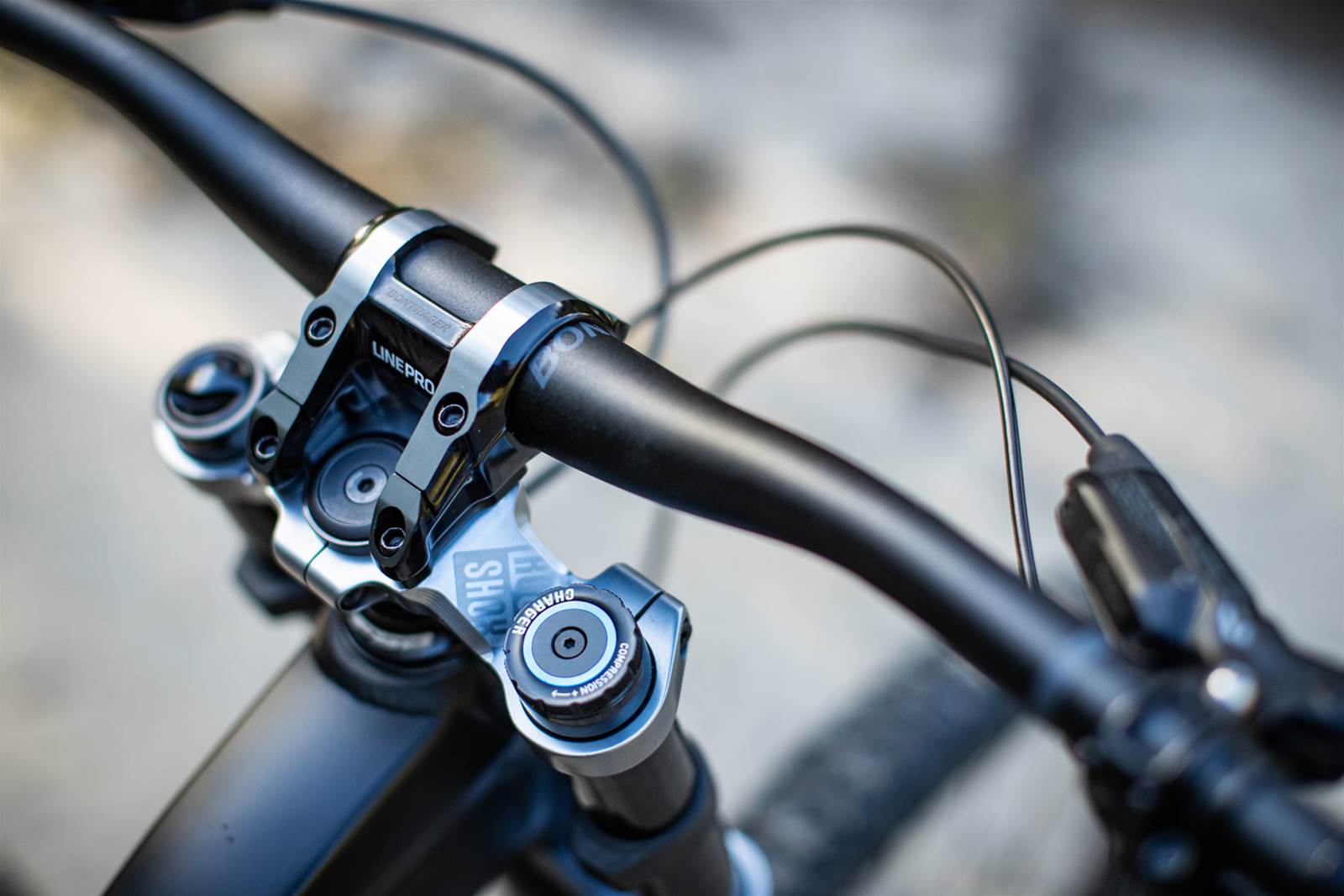
A specific aim in the development of the new Session was to increase the bike’s traction and control in high speed ‘chundery’ terrain. According to lead engineer Dylan Howes (who has worked on every iteration of the Session for the last 20 years), the rearward axle path allowed by the new design moves the rear wheel from 12 to 25mm further backwards compared to old Session, depending on where you are in the travel.
On the trail this is immediately noticeable. Repeated harsh hits are kept under control at the rear, encouraging you to hit chunky sections faster. Bigger impacts are swallowed up by the new Session, which has reduced pedal kickback by 10-19 degrees (from 15-27 degrees on the old Session to 5-8 degrees on the new bike). If I had to describe the new Session in a word, it’d definitely be calm. There’s none of the pitching forward sensation you can get from pedal kickback, or the rear end losing composure under repeated hits or heavy braking.
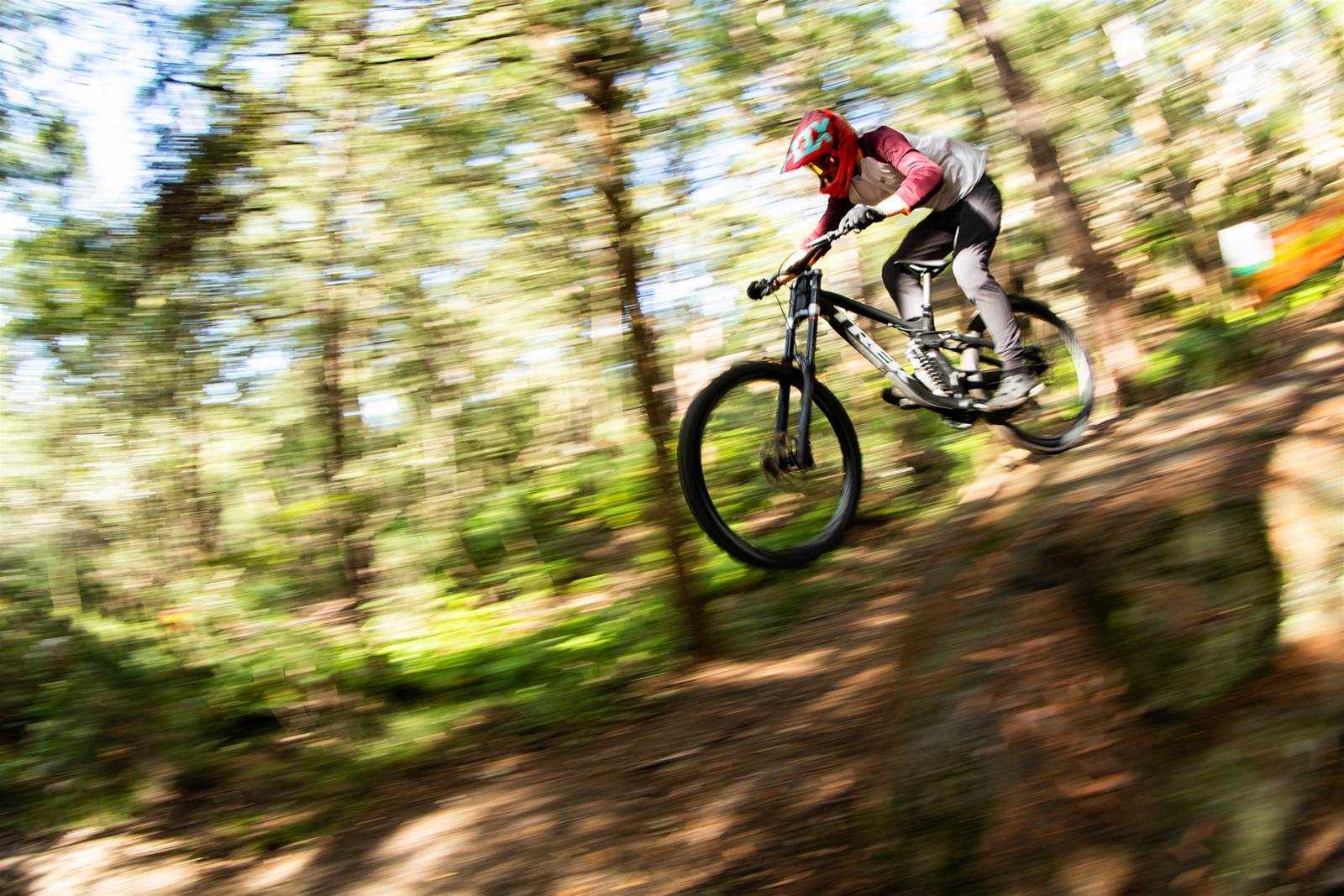
Another area the Session shines in is front to rear balance. The geometry was spot on for me, striking a great balance between stability, whilst still being able to link the bike through tighter turns and ride nimbly at lower speeds. The Mino Link and progression adjustments are also handy for different tracks where certain handling attributes might be more useful. I rode the majority of the testing with the Mino Link in the standard high position and 25 percent progression.
The idler is a key component of the Session, and it allows the bike to have its rearward axle path and reduced pedal kickback. Despite this, because the idler isn’t concentric with the main pivot Trek have been able to tune the anti-squat to allow the bike to remain agile and ‘poppy’. This is noticeable out on the trail, however if you’re the kind of rider that likes a bit of feedback about what’s happening underneath you, the Session almost completely mutes these sensations. Despite this, if you push into the bike it’ll give you the energy back, so I had no issues popping over trail features, or pre-jumping to pump terrain.
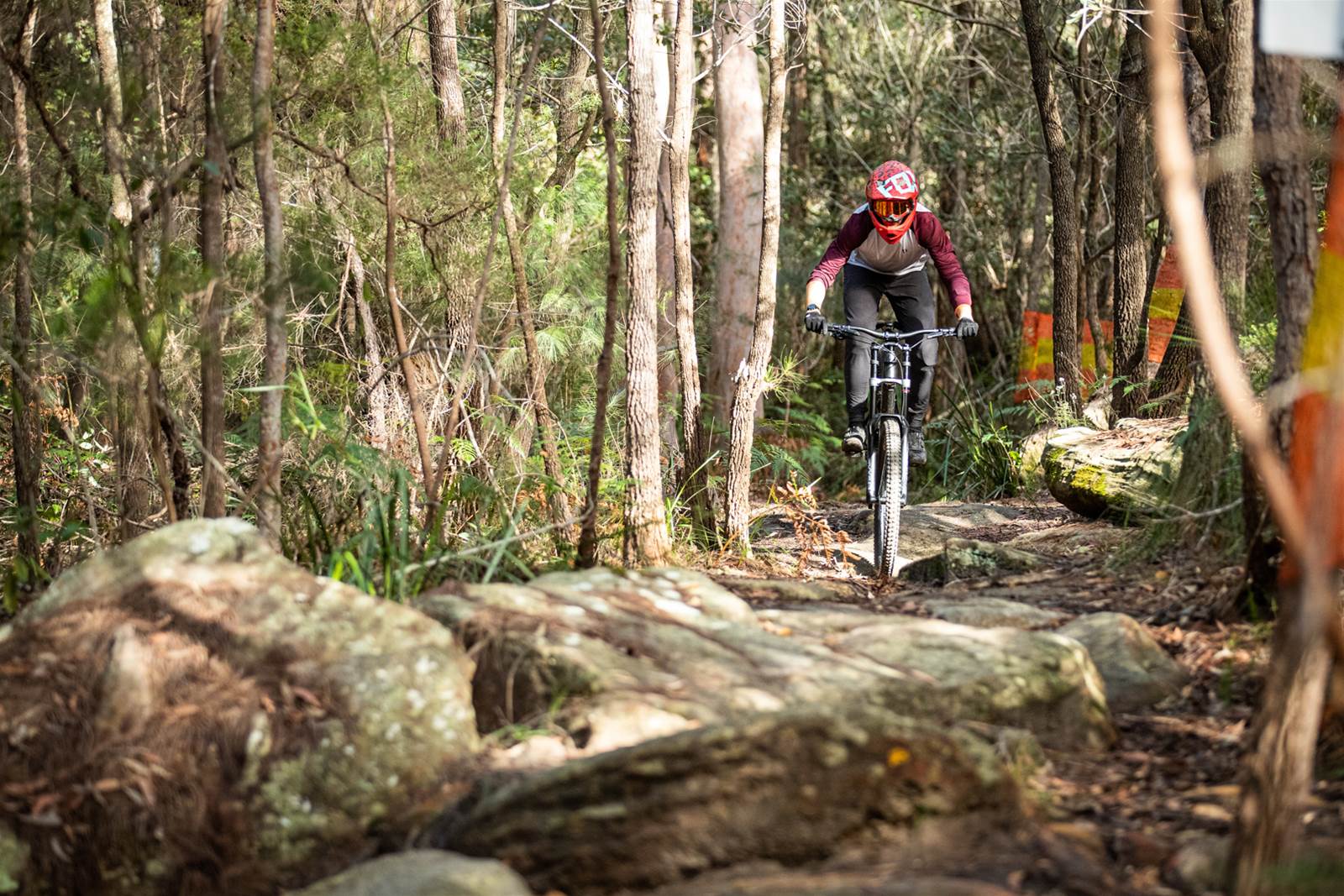
Overall, I was thoroughly impressed by the new Session. Whilst the previous Session is the bike ridden by the current World Champion, I suspect Reece Wilson will have no problems remaining at the top of the results sheet aboard this new bike. The way Trek have blended the Session’s handling and suspension kinematics makes for a confidence inspiring ride that keeps things calm when the trail gets rough and fast.
After more downhill and long travel bike reviews? See below for some more heavy hitters.
TESTED: YT TUES CF Pro Race
TESTED: Revel Bikes Rail
TESTED: Trek Slash
TESTED: Sunn Kern EN 29 Finest
TESTED: Canyon Torque CF 8.0
One componentry choice on the new Session I was confused about was the 180mm rear rotor. Whilst I didn’t ride the bike on any tracks long or steep enough to really need a bigger rear rotor, I think 200mm should come as standard front and rear on a downhill bike, and there’s plenty of professionals running 220mm rotors on the World Cup circuit. Whilst you’ll need to source adaptors, you can run 220mm rotors front and rear aboard the Session.
The Session is a great choice if you’re after a Downhill race machine that’ll go fast from your first ride. One style of rider I wouldn’t recommend the Session to is the rider who enjoys selecting the smoothest lines and feeling what’s going on underneath them to achieve this. Whilst the Session responds well to being pumped and pops around the trail nicely, the bike will happily smash through most lines without letting you know your line choice could be better.
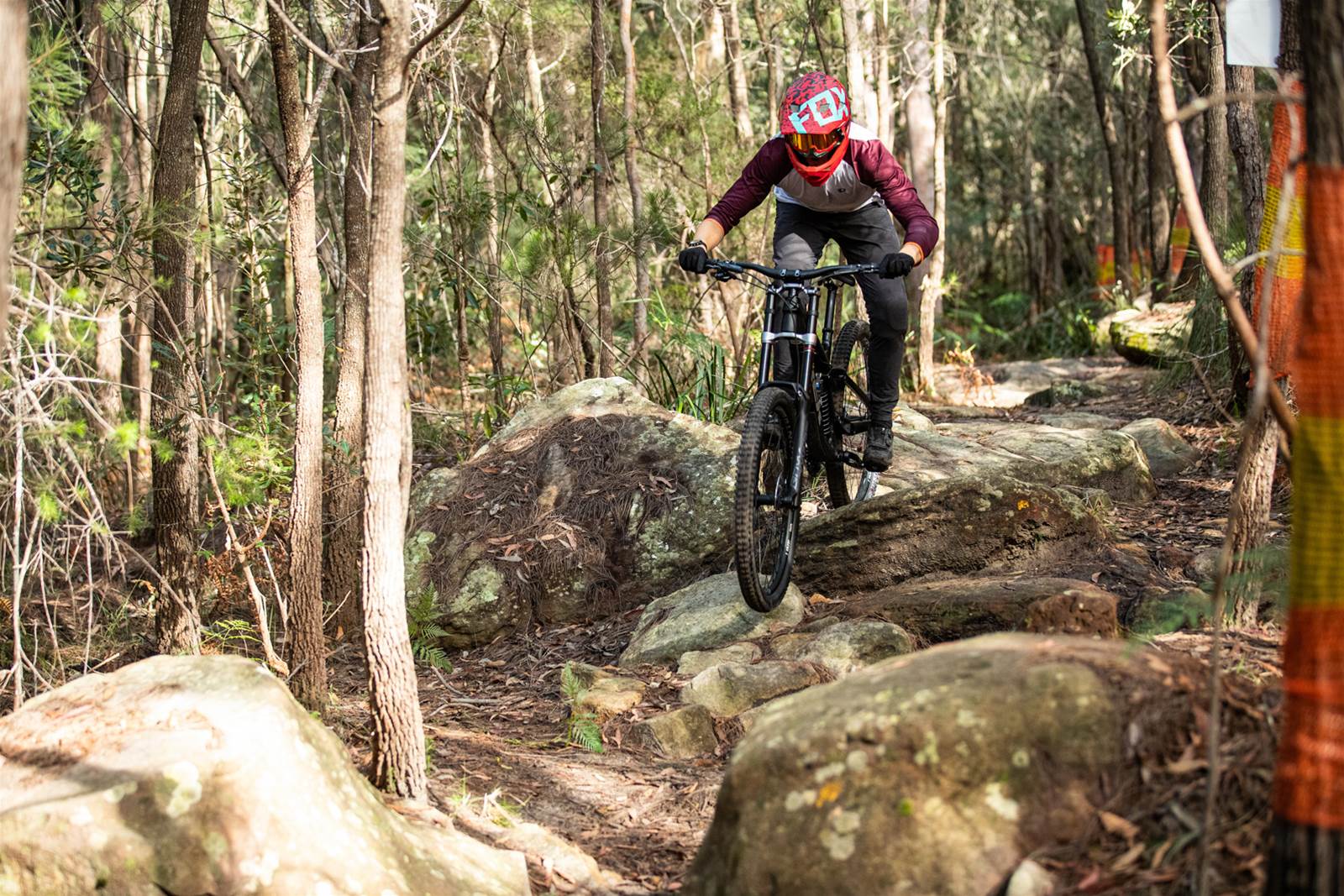
In terms of value for money, the Session 8’s price of $6999 is there or thereabouts in the 2022 downhill market. In terms of componentry, I had no issues with the spec that came on the Session 8, and key components like the brakes and suspension offered fantastic performance.
RRP: $6999
Weight: 17.95kg (size R2 as tested, without pedals)
From: https://www.trekbikes.com/au/en_AU/
Related Articles

We ride the all-new 2024 Norco Sight and Optic

TESTED: Pirelli Scorpion RACE Enduro and Downhill Traction MTB tyres
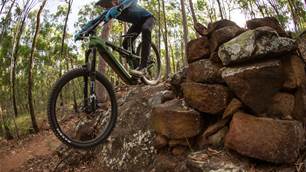
First rides on the 2024 Merida eOne-Sixty
Latest news.

Chelsea's main target is to offload players: Maresca

Ronaldo to receive special UEFA Champions award

Arsenal, Juventus and Poland keeper Szczesny retires
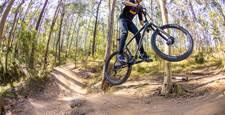
GROUP TEST: 8 Budget Mountain Bikes Under $2000
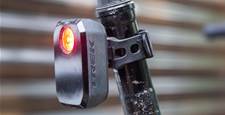
TESTED: Trek CarBack is like eyes in the back of your head
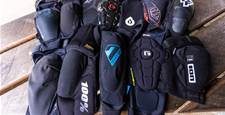
GROUP TEST: Trail Knee Pads

GROUP TEST: Sunglasses for mountain biking and cycling

- Register New User
- First Looks
- Friday Fails
- Community Blogs
- Fantasy League DH
- Places Directory
First Ride: 2022 Trek Session - Nope, Not Going to Say It
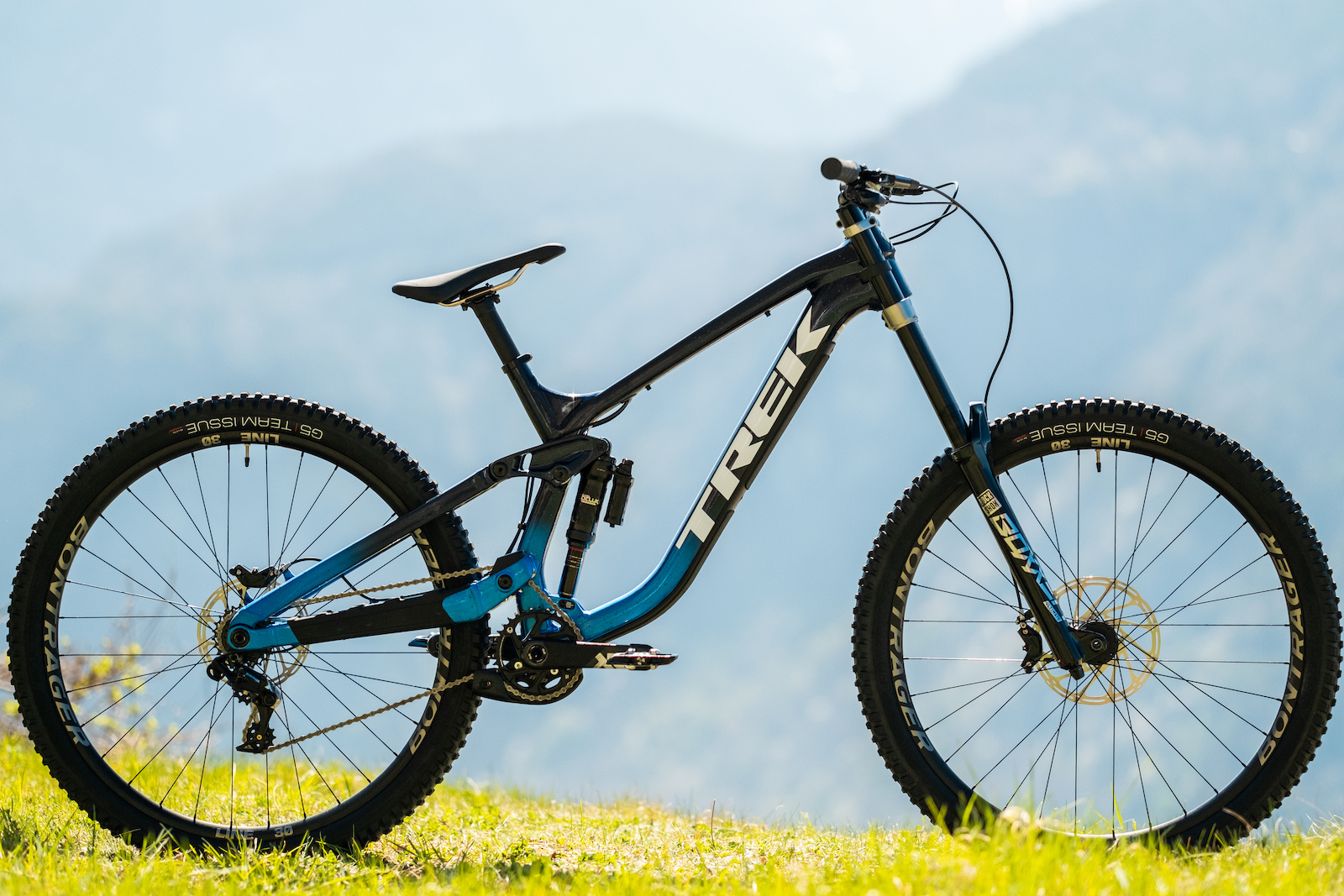
Cool Features
- Rocky Mountain
- Specialized
- YT Industries
- Allied Cycle Works
- Black Market
- DALLINGRIDGE
- Diamondback
- Early Rider
- EVO Bicycles
- Growler Bikes
- Guerrilla Gravity
- iGO Electric
- Intense 951
- Juiced Bikes
- View all brands
- Production Privee
- Rad Power Bikes
- Rambo Bikes
- Riese & Müller
- Soul Fast E Bikes
- Spark Cycleworks
- State Bicycle Co.
- Structure Cycleworks
- Surface 604
- Van Nicholas
- Vintage Electric
- We Are One Composites

- Cross Country
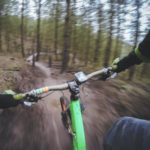
- All Mountain
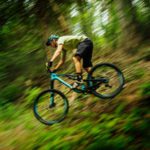
Trek Session 8 DH 27.5
- AUS $ NZD $ USD $ CAD $ GBP £ EUR €
Colour / Matte Trek Black
Size / S, M, L, XL
At a glance
Where to buy.

Specifications
- Frame Alpha Platinum Aluminum, ABP, Full Floater, EVO Link, E2 tapered head tube, Mino Link, integrated frame protection, internal control routing, MicroTruss, down tube guard, ISCG Mount, 210mm travel
- Wheels DT Swiss FR2150, 20mm front, 157x12 rear
- Wheel Size 27.5"
- Tires Bontrager G4 Team Issue, 27.5x2.35"
- Crank Truvativ Descendant, 36T
- Rear Derailleur SRAM GX, Type 2
- Shifters SRAM GX, 10 speed
- Brakeset SRAM Guide R hydraulic disc
- Handlebar Bontrager Rhythm Elite, 31.8mm, 15mm rise
- Saddle Bontrager Evoke 2, chromoly rails
- Seatpost Bontrager Rhythm Elite, 2-bolt head, 31.6mm, zero offset
- Stem Bontrager Direct Mount, 31.8mm
- Headset FSA Orbit, E2, sealed cartridge bearing
Q: What size wheels does the 2016 Trek Session 8 DH 27.5 have?
The 2016 Trek Session 8 DH 27.5 has 27.5" wheels.
Q: What size 2016 Trek Session 8 DH 27.5 should I get?
No comments on this bike yet. Why not be the first?
Leave a Reply Cancel reply
Your email address will not be published. Required fields are marked *
Want more MTB in your mailbox?
The latest on mountain bikes delivered straight to your mailbox.

More Bikes in Range View All

Trek Session AL Frameset

Trek Session 9 X01

Trek Session 88 Downhill
More downhill bikes view all.

Polygon COLLOSUS DH9


Dartmoor Roots Black Angel
Recommended fork travel: 180mm – 200mm, 1x drivetrain only

Devinci Wilson Carbon RC
Carbon Bash Plate and WLSN Mudguard Rear Fender Included
Deals View All
View all deals, recent posts view all.

Blackburn Honest Digital Pressure Gauge Review
It's 2020 people. The squeeze and bounce test doesn't cut it anymore (and this is…

Comparing Mountain Bikes
Mountain Bikes are complicated machines. They have parts from hundreds of different manufacturers, come in…
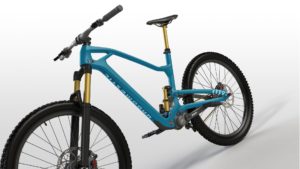
Undomestic Mountain Bikes: Here’s what we know
Update March 2020: Undomestic has announced that they are manufacturing frames "at this moment" and…
Send Feedback
Have a suggestion? Looking for a bike that's not on MTB Database? Or perhaps you've spotted an error?
We'd love to hear from you. Let us know with the form below.
This website uses cookies to ensure you get the best experience possible. Learn more.
About MTB Database
Explore, search and compare thousands of the world’s best mountain bikes here on Mountain Bike Database.
Compare prices, components, suspension, reviews, images and more on current and past MTB’s. You can even share reviews, comments and questions on mountain bikes. View and compare a huge selection of bikes from brands such as Trek , Specialized , Giant , Santa Cruz , Norco and more .
We strive to provide accurate and up-to-date information for mountain bikes on MTB Database. If you’ve spotted any issues, please let us know . We also include helpful tools, such as our frame size calculator, to assist you in choosing the right mountain bike. Bear in mind that these tools serve as a guide and simply provide a general indication. Refer to information provided by your bike manufacturer for the most applicable information for your bike.
Bikes By Brand
Bikes by year, bikes by riding style, bikes by wheel size, popular bikes.
- 2022 Specialized Epic EVO Comp
- 2022 Trek Marlin 6
- 2022 Specialized Enduro Comp
- 2022 Specialized S-Works Epic EVO
- 2022 Specialized Epic EVO Expert
- 2022 Giant Fathom 29 1
- 2022 Trek Marlin 7
Latest Bikes
- 2023 Commencal SUPREME DH V5 SIGNATURE 70'S
- 2023 Orange Phase 29 Factory
- 2022 Commencal META SX V4 TEAM Frame
- 2023 Commencal SUPREME DH V5 SIGNATURE LTD
- 2023 Commencal META SX V4 - Frame
- 2023 Riese & Müller Swing4 vario
- 2023 Riese & Müller Swing4 silent
- Session 8 29 GX

- Rider Notes
2018 Trek Session 8 27.5

A 27.5″ aluminum frame full suspension downhill bike with high-end components. Compare the full range
Manufacturer Price
For This Bike
View more similar bikes →
Based on frame geometry and build specs.
A bike with lower gearing will be easier to ride up steep hills, while a higher top end means it will pedal faster down hills.
Session 8 27.5
Similar Bikes
(descending)
Add custom gearing

Mar 2019 · McCoy
Faster than a speeding bullet
Read Review

Nov 2018 · Drew Rohde
A review worth reading if you are considering a 29er DH bike. The Trek Session 9.9 downhill bike has a couple interesting quirks but is without a doubt one of the best DH bikes we've ridden in. If you're a racer looking for pick up speed and drop seconds, check this bike out!

Oct 2018 · Paul Aston
One of the most successful, recognizable silhouettes on the DH circuit now comes with wagon wheels. So how does it compare to the newest crop of DH bikes?
Ultra light and stiff
Exceptional, simple finish
Balanced, aggressive geometry
Quick acceleration and efficient pedaling
Possibly too light and stiff
Top of the line price tag
Lacking traction in rough stuff
Reach may limit taller riders

Sep 2018 · Seb Stott
A pricey bike let down by a basic fork, disappointing brakes and dated geometry
‘ABP’ rear suspension provides a solid, supple action
Relatively short front end feels cramped, high bottom bracket and short frame deliver a sometimes precarious-feeling ride, harsh fork and weak brakes are disappointing for the price

If you're a DH racer, your special edition bike usually comes out during worlds - if you're good enough to qualify and your bike sponsor loves you.

May 2017 · Matt Phillips
All new carbon framesets for both 27.5 and 29 inch wheels for Trek's downhill race bike

Trek releases the 2018 Session with updated geometry, refined linkage, and a revamped Float X2 shock. There's also a 29 inch version, which the internet will probably have nothing to say about.
May 2017 · Smurf
The world's first production, carbon 29er downhill bike

First added February 15
Last updated February 15
Not listed for 2,382 days

2018 Trek Session 8 27.5 Bike (discontinued)

- Write Review
Specifications
Sizes and geometry.
www.trekbikes.com/
More Products

2022 Vitus Dominer Bike

2024 YT Tues Core 2 Bike

2022 Commencal FRS Ride Bike

2022 Commencal FRS Essential Dark Slate Bike

2022 Scott Gambler 920 Bike

2022 Commencal Supreme DH Essential Bike

2024 Rocky Mountain Slayer A30 Park SRAM Bike

2023 Pole Vikkelä Enduro FastTrack Bike
- Mountain Bikes
- Trek Mountain Bikes
- Trek Session
- 2018 Trek Session

Most Popular
- Integrations
- Learning Center
MoSCoW Prioritization
What is moscow prioritization.
MoSCoW prioritization, also known as the MoSCoW method or MoSCoW analysis, is a popular prioritization technique for managing requirements.
The acronym MoSCoW represents four categories of initiatives: must-have, should-have, could-have, and won’t-have, or will not have right now. Some companies also use the “W” in MoSCoW to mean “wish.”
What is the History of the MoSCoW Method?
Software development expert Dai Clegg created the MoSCoW method while working at Oracle. He designed the framework to help his team prioritize tasks during development work on product releases.
You can find a detailed account of using MoSCoW prioritization in the Dynamic System Development Method (DSDM) handbook . But because MoSCoW can prioritize tasks within any time-boxed project, teams have adapted the method for a broad range of uses.
How Does MoSCoW Prioritization Work?
Before running a MoSCoW analysis, a few things need to happen. First, key stakeholders and the product team need to get aligned on objectives and prioritization factors. Then, all participants must agree on which initiatives to prioritize.
At this point, your team should also discuss how they will settle any disagreements in prioritization. If you can establish how to resolve disputes before they come up, you can help prevent those disagreements from holding up progress.
Finally, you’ll also want to reach a consensus on what percentage of resources you’d like to allocate to each category.
With the groundwork complete, you may begin determining which category is most appropriate for each initiative. But, first, let’s further break down each category in the MoSCoW method.
Start prioritizing your roadmap
Moscow prioritization categories.

1. Must-have initiatives
As the name suggests, this category consists of initiatives that are “musts” for your team. They represent non-negotiable needs for the project, product, or release in question. For example, if you’re releasing a healthcare application, a must-have initiative may be security functionalities that help maintain compliance.
The “must-have” category requires the team to complete a mandatory task. If you’re unsure about whether something belongs in this category, ask yourself the following.

If the product won’t work without an initiative, or the release becomes useless without it, the initiative is most likely a “must-have.”
2. Should-have initiatives
Should-have initiatives are just a step below must-haves. They are essential to the product, project, or release, but they are not vital. If left out, the product or project still functions. However, the initiatives may add significant value.
“Should-have” initiatives are different from “must-have” initiatives in that they can get scheduled for a future release without impacting the current one. For example, performance improvements, minor bug fixes, or new functionality may be “should-have” initiatives. Without them, the product still works.
3. Could-have initiatives
Another way of describing “could-have” initiatives is nice-to-haves. “Could-have” initiatives are not necessary to the core function of the product. However, compared with “should-have” initiatives, they have a much smaller impact on the outcome if left out.
So, initiatives placed in the “could-have” category are often the first to be deprioritized if a project in the “should-have” or “must-have” category ends up larger than expected.
4. Will not have (this time)
One benefit of the MoSCoW method is that it places several initiatives in the “will-not-have” category. The category can manage expectations about what the team will not include in a specific release (or another timeframe you’re prioritizing).
Placing initiatives in the “will-not-have” category is one way to help prevent scope creep . If initiatives are in this category, the team knows they are not a priority for this specific time frame.
Some initiatives in the “will-not-have” group will be prioritized in the future, while others are not likely to happen. Some teams decide to differentiate between those by creating a subcategory within this group.
How Can Development Teams Use MoSCoW?
Although Dai Clegg developed the approach to help prioritize tasks around his team’s limited time, the MoSCoW method also works when a development team faces limitations other than time. For example:
Prioritize based on budgetary constraints.
What if a development team’s limiting factor is not a deadline but a tight budget imposed by the company? Working with the product managers, the team can use MoSCoW first to decide on the initiatives that represent must-haves and the should-haves. Then, using the development department’s budget as the guide, the team can figure out which items they can complete.
Prioritize based on the team’s skillsets.
A cross-functional product team might also find itself constrained by the experience and expertise of its developers. If the product roadmap calls for functionality the team does not have the skills to build, this limiting factor will play into scoring those items in their MoSCoW analysis.
Prioritize based on competing needs at the company.
Cross-functional teams can also find themselves constrained by other company priorities. The team wants to make progress on a new product release, but the executive staff has created tight deadlines for further releases in the same timeframe. In this case, the team can use MoSCoW to determine which aspects of their desired release represent must-haves and temporarily backlog everything else.
What Are the Drawbacks of MoSCoW Prioritization?
Although many product and development teams have prioritized MoSCoW, the approach has potential pitfalls. Here are a few examples.
1. An inconsistent scoring process can lead to tasks placed in the wrong categories.
One common criticism against MoSCoW is that it does not include an objective methodology for ranking initiatives against each other. Your team will need to bring this methodology to your analysis. The MoSCoW approach works only to ensure that your team applies a consistent scoring system for all initiatives.
Pro tip: One proven method is weighted scoring, where your team measures each initiative on your backlog against a standard set of cost and benefit criteria. You can use the weighted scoring approach in ProductPlan’s roadmap app .
2. Not including all relevant stakeholders can lead to items placed in the wrong categories.
To know which of your team’s initiatives represent must-haves for your product and which are merely should-haves, you will need as much context as possible.
For example, you might need someone from your sales team to let you know how important (or unimportant) prospective buyers view a proposed new feature.
One pitfall of the MoSCoW method is that you could make poor decisions about where to slot each initiative unless your team receives input from all relevant stakeholders.
3. Team bias for (or against) initiatives can undermine MoSCoW’s effectiveness.
Because MoSCoW does not include an objective scoring method, your team members can fall victim to their own opinions about certain initiatives.
One risk of using MoSCoW prioritization is that a team can mistakenly think MoSCoW itself represents an objective way of measuring the items on their list. They discuss an initiative, agree that it is a “should have,” and move on to the next.
But your team will also need an objective and consistent framework for ranking all initiatives. That is the only way to minimize your team’s biases in favor of items or against them.
When Do You Use the MoSCoW Method for Prioritization?
MoSCoW prioritization is effective for teams that want to include representatives from the whole organization in their process. You can capture a broader perspective by involving participants from various functional departments.
Another reason you may want to use MoSCoW prioritization is it allows your team to determine how much effort goes into each category. Therefore, you can ensure you’re delivering a good variety of initiatives in each release.
What Are Best Practices for Using MoSCoW Prioritization?
If you’re considering giving MoSCoW prioritization a try, here are a few steps to keep in mind. Incorporating these into your process will help your team gain more value from the MoSCoW method.
1. Choose an objective ranking or scoring system.
Remember, MoSCoW helps your team group items into the appropriate buckets—from must-have items down to your longer-term wish list. But MoSCoW itself doesn’t help you determine which item belongs in which category.
You will need a separate ranking methodology. You can choose from many, such as:
- Weighted scoring
- Value vs. complexity
- Buy-a-feature
- Opportunity scoring
For help finding the best scoring methodology for your team, check out ProductPlan’s article: 7 strategies to choose the best features for your product .
2. Seek input from all key stakeholders.
To make sure you’re placing each initiative into the right bucket—must-have, should-have, could-have, or won’t-have—your team needs context.
At the beginning of your MoSCoW method, your team should consider which stakeholders can provide valuable context and insights. Sales? Customer success? The executive staff? Product managers in another area of your business? Include them in your initiative scoring process if you think they can help you see opportunities or threats your team might miss.
3. Share your MoSCoW process across your organization.
MoSCoW gives your team a tangible way to show your organization prioritizing initiatives for your products or projects.
The method can help you build company-wide consensus for your work, or at least help you show stakeholders why you made the decisions you did.
Communicating your team’s prioritization strategy also helps you set expectations across the business. When they see your methodology for choosing one initiative over another, stakeholders in other departments will understand that your team has thought through and weighed all decisions you’ve made.
If any stakeholders have an issue with one of your decisions, they will understand that they can’t simply complain—they’ll need to present you with evidence to alter your course of action.
Related Terms
2×2 prioritization matrix / Eisenhower matrix / DACI decision-making framework / ICE scoring model / RICE scoring model
Prioritizing your roadmap using our guide
Talk to an expert.
Schedule a few minutes with us to share more about your product roadmapping goals and we'll tailor a demo to show you how easy it is to build strategic roadmaps, align behind customer needs, prioritize, and measure success.
Share on Mastodon

IMAGES
COMMENTS
Reece Wilson's world champion bike, the Session 8 29 GX , is now available for the avarage Joe. And it cuts a damn fine figure in every bike park. The combination of a 0 degree head tube angle and a long wheelbase calms down the handling of the Trek Fully, even if you ride fast. Heavy riders over 85 kilos aren´t likely to encounter too many ...
Test Riders. Piloting our Trek Session 8 test bike was Vital's own Jason Schroeder and long-time contributor, Sean "Griz" McClendon. Both have an extensive history within the mountain bike industry. First between the tape racing DH at the National and World Cup level followed by years working for multiple brands within the mountain bike ...
2024 Trek. Session 8. A 29″ aluminum frame full suspension downhill bike with high-end components. Compare the full range. Manufacturer Price. €5,999 ($6,592) Price History. Weight: ... Field Test Review: 2024 Trek Slash - Rides Like a Session. Oct 2023 · Dario DiGiulio.
Weight. M - 17.66 kg / 38.93 lbs. Weight limit. This bike has a maximum total weight limit (combined weight of bicycle, rider, and cargo) of 300 pounds (136 kg). We reserve the right to make changes to the product information contained on this site at any time without notice, including with respect to equipment, specifications, models, colors ...
Session 8 29 GX. $5,499.99. Model 5279084. Retailer prices may vary depending on location and delivery method. The final price will be shown in your cart. Session 8 is a downhill mountain bike with a burly alloy frame and high-pivot suspension design that keeps you nimble, planted, and blazing fast on even the most punishing runs. Compare.
Trek Session 8 27.5 review | BikeRadar
The Session 8 model I received was in the R2 size. Trek are offering three sizes of the Session, and are doing away with the traditional 'small, medium, large' sizing structure, much like Specialized's S system. The Session range comes in R1, R2, and R3. What Trek have done with the three sizes is pretty nifty.
With the new Session, Trek shifts over to an R sizing model, with R1, R2 and R3 based around the reach numbers of the bike. Those three sizes have reach numbers of 440, 465 and 493 mm respectively ...
The 2019 Trek Session 8 27.5 is an Downhill Aluminium / Alloy mountain bike. It sports 27.5" wheels, is priced at $4,729 USD, comes in a range of sizes, including S, M, L, XL, has RockShox suspension and a SRAM drivetrain. The bike is part of Trek 's Session range of mountain bikes. ABP (Active Braking Pivot), Integrated frame protection, Mino ...
The 2016 Trek Session 8 DH 27.5 is an Downhill Aluminium / Alloy mountain bike. It sports 27.5" wheels, comes in a range of sizes, including S, M, L, XL and a SRAM drivetrain. The bike is part of Trek 's Session range of mountain bikes.
Session 8 29 GX. Retailer prices may vary depending on location and delivery method. The final price will be shown in your cart. Session 8 is a downhill mountain bike with a robust alloy frame and high-pivot suspension design that keeps you nimble, planted, and blazing fast on even the most punishing runs.
2012 Trek. Session 8. A 26″ aluminum frame full suspension downhill bike with high-end components. Compare the full range. Frame: Aluminum: Suspension: Full, 210 / 210mm: ... Bike Test: Trek Session 88 DH. Dec 2009. Trek's mountaitaitain bike development team hashashas been on a tear over the last few years, and the company's Session big ...
Bike Test: Trek Session 9.9 29. Mar 2019 · McCoy. Faster than a speeding bullet. Read Review. Review: Trek Session 9.9 29. Nov 2018 · Drew Rohde. ... Trek Session 8 27.5 review. Sep 2018 · Seb Stott. A pricey bike let down by a basic fork, disappointing brakes and dated geometry. Highs
Session C 27.5 Frameset. $4,399.99. Buy. Trek 2022 Session 29 Lower Headset 27.5 Convert Cup. Trek 2022 Session 29 Lower Headset 27.5 Convert Cup. $10.99. Buy. Free shipping on orders over $50 (continental U.S. only). International shipping available.
Free standard shipping on all bikes (continental U.S. only). Flat rate shipping to Hawaii and Alaska. $4,399.99. Buy. Session C 27.5 Frameset. Session C 27.5 Frameset. $4,399.99. Buy. Trek 2022 Session 29 Lower Headset 27.5 Convert Cup.
Test. "I believe that it must be the policy of the United States to support free peoples who are resisting subjugation by armed minorities or by outside pressures." —President Harry S. Truman, Address Before a Joint Session of Congress, March 12, 1947 In this speech, Truman was advocating. the Truman Doctrine.
Weak alignment: You should start from the less absolute quadrants. Namely the could-have and should-have. The proposed path will help the team to build their prioritization muscle. The proposed ...
MoSCoW prioritization, also known as the MoSCoW method or MoSCoW analysis, is a popular prioritization technique for managing requirements. The acronym MoSCoW represents four categories of initiatives: must-have, should-have, could-have, and won't-have, or will not have right now. Some companies also use the "W" in MoSCoW to mean "wish.".
Sign in to get trip updates and message other travelers.. Moscow ; Hotels ; Things to do ; Restaurants ; Flights ; Vacation Rentals ; Vacation Packages